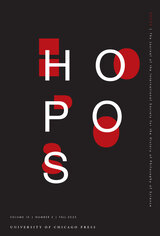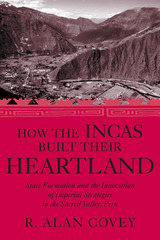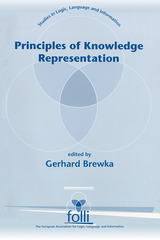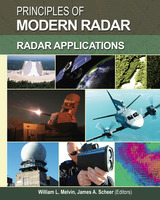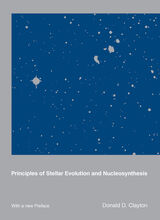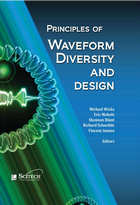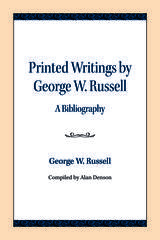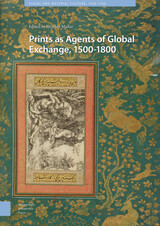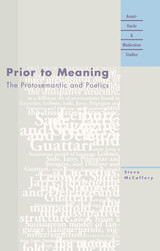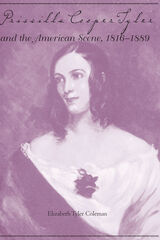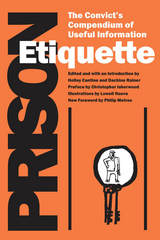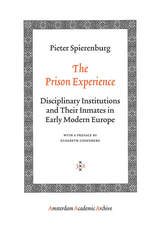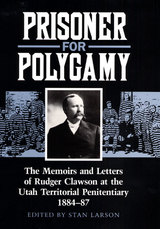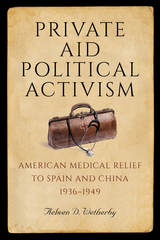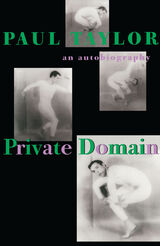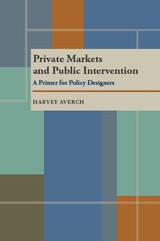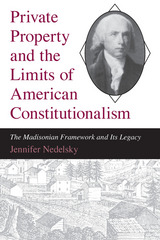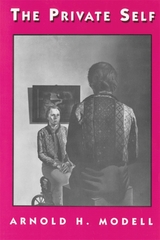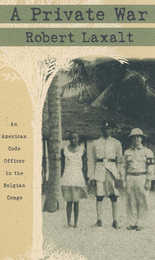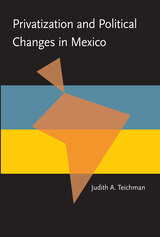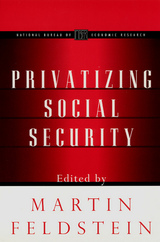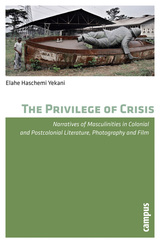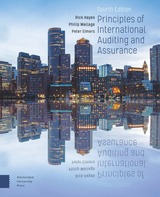 Principles of International Auditing and Assurance: 4th Edition
Rick Hayes
Amsterdam University Press, 2021 The first textbook based upon International Standards on Auditing (ISAs), this fully revised and updated fourth edition presents a structured approach to auditing principles using ISAs as its basis. The International Standards on Auditing are now widely regarded as the global benchmark for auditing standards and as such an important audit quality indicator.
This book describes the developments and practical use of all ISAs, as well as significant national standards in different countries. The new edition has been updated in line with International Standards and presents a truly International perspective. The book provides students with a real-world perspective as close to current auditing practice and thinking as possible.
Key features:
-Structure of the book following the four phases of the audit process -Coverage of the latest auditing insights including technology and automated tools & techniques (data analytics) -Updates of the most recent auditing & assurance standards, including ISA 315 and 540 -Highlighting the broader range of assurance engagements -Practice exam-style questions with end-of-chapter answers
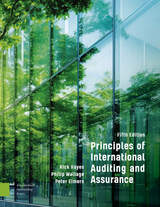 Principles of International Auditing and Assurance: 5th Edition
Rick Hayes
Amsterdam University Press, 2024 This groundbreaking textbook redefines auditing education by seamlessly incorporating International Standards on Auditing (ISAs) and other IAASB assurance standards at its core, establishing a new paradigm in how auditing principles are taught. Recognized worldwide as the hallmark of auditing excellence, ISAs set the highest benchmarks for audit quality. This latest edition meticulously unfolds the evolution, application, and global integration of ISAs, alongside other assurance standards and key national frameworks, ensuring that the content remains at the forefront of international practices. It provides students with an extraordinary depth of insight into auditing and assurance, mirroring the very latest in contemporary practices and thought leadership. Key highlights: - Comprehensive exploration of the audit profession, essential concepts, the audit process across four stages, and specialized topics.
- Insight into the latest advancements in audit technology, including data analytics.
- Updates on the latest auditing and assurance standards, ensuring relevance and applicability.
- Expansion into a wide spectrum of assurance engagements, including a brand-new dedicated chapter on sustainability assurance.
- Practice questions styled like exams at the end of each chapter, facilitating effective review and learning.
With its global perspective and adherence to the latest standards, this textbook is an essential resource for students aspiring to excel in the dynamic field of auditing.
Principles Of Interpretation: Continental Thought Series, V5
Edward Goodwin Ballard
Ohio University Press, 1983 This is a major phenomenological work in which real learning works in graceful tandem with genuine and important insight. Yet this is not a work of scholarship; it is a work of philosophy, a work that succeeds both in the careful, descriptive massing of detail and in the power of its analysis of the conditions that underlie the possibility of such things as description, interpretation, perception, and meaning. Principles of Interpretation formulates answers to these questions: How does the interpretative process proceed? What are its fundamentals? What assurance have we that our interpretations are in principal faithful to that which is to be interpreted? What conclusions are indicated concerning the past phases of our history and its present tendencies?
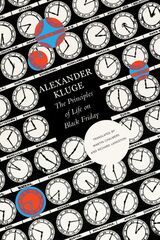 The Principles of Life on Black Friday: Chronicle of Emotions, Notebook 1
Alexander Kluge
Seagull Books, 2023 A highly readable and lighthearted, yet intellectual-stimulating exploration of the modern human condition.
This volume concerns itself with the question of time, from the description of a brief fragment passing by in a matter of minutes to stories of the unexpected stock-market crash of 1929, a once-in-a-century event that Europeans call ‘Black Friday’ because Wall Street’s collapse reached the Old World one day later. Through this exploration of time, Kluge ponders some fundamental questions not altered by the passing of time: What can I trust? How can I protect myself? What should I be afraid of? Our age today has achieved a new kind of obscurity. We’ve encountered a pandemic. We’ve witnessed the Capitol riots. We see before us inflation, war, and a burning planet. We gaze at the world with suspense. What we need in our lives is orientation—just like ships that navigate the high seas. We might just find that in Kluge’s vignettes and stories.
 Principles of Medical Treatment: Sixth Edition, Revised and Enlarged
George Cheever Shattuck
Harvard University Press Designed as a pocket reference book for the practising physician, this work has already met with wide favor in the profession. In this sixth edition any material which appeared in previous editions has been completely rewritten, expanded, or thoroughly revised. New chapters have been added on asthma, syphilis, lead poisoning, anemia, endrocrine disorders, preoperative and postoperative medical treatment, and vaccine therapy. Special effort has been made to emphasize principles and to describe separately the methods recommended for putting them into practice. As an aid in correlating principles of treatment with knowledge of the mode of action of disease, salient facts have been outlined in most of the chapters as a prelude to treatment. The following well-known physicians have contributed chapters: Dr. Joseph C. Aub, Dr. Gerald Blake, Dr. John B. Hawes, 2d, Dr. Charles H. Lawrence, Dr. George R. Minot, Dr. Edwin H. Place, Dr. Francis H. Rackemann, Dr. Benjamin H. Ragle, and Dr. C. Morton Smith.
Principles of Microwave Circuits
C.G. Montgomery
The Institution of Engineering and Technology, 1987 Principles of Microwave Circuits is an unabridged reprint of the book first published in 1948 by McGraw Hill as Volume 8 of the MIT Radiation Laboratory Series. Since the original publication of this book, a number of errors have been brought to our attention. Corrections of these errors are incorporated in this edition.
 Principles of Microwave Measurements
G.H. Bryant
The Institution of Engineering and Technology, 1993 With this book engineers will understand the fundamental theoretical bases of modern microwave measurements. The narrative is firmly based on the principles of swept frequency techniques, though single frequency measurements, for instance of power, are also fully covered. By the use of flowgraph techniques and careful approximations, the author has given physical meaning to the mathematical arguments and has been careful to show the practical and theoretical limitations on measurement accuracy. The book covers a wide range of microwave measurements in the time and frequency domains, including reflectometry, the Smith chart, spectrum analysers, vector and scalar analysers, multiports, power, noise, frequency stability, time domain reflectometry, and a comprehensive account of antenna far and near field measurements. It is particularly recommended for young engineers requiring a good background in microwave measurement principles and will also be a useful reference for more experienced engineers.
 Principles of Modern Radar: Advanced techniques, Volume 2
William L. Melvin
The Institution of Engineering and Technology, 2013 This second of three volumes in the Principles of Modern Radar series offers a much-needed professional reference for practicing radar engineers. It provides the stepping stones under one cover to advanced practice with overview discussions of the most commonly used techniques for radar design, thereby bridging readers to single-topic advanced books, papers, and presentations. It spans a gamut of exciting radar capabilities from exotic waveforms to ultra-high resolution 2D and 3D imaging methods, complex adaptive interference cancellation, multi-target tracking in dense scenarios, multiple-input, multiple-output (MIMO) and much more. All of this material is presented with the same careful balance of quantitative rigor and qualitative insight of Principles of Modern Radar: Basic Principles. Each chapter is likewise authored by recognized subject experts, with the rigorous editing for consistency and suggestions of numerous volunteer reviewers from the radar community applied throughout. Advanced academic and training courses will appreciate the sets of chapter-end problems for students, as well as worked solutions for instructors. Extensive reference lists show the way for further study.
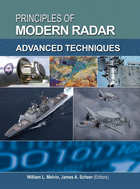 Principles of Modern Radar: Advanced techniques, Volume 2
William L. Melvin
The Institution of Engineering and Technology, 2013 This second of three volumes in the Principles of Modern Radar series offers a much-needed professional reference for practicing radar engineers. It provides the stepping stones under one cover to advanced practice with overview discussions of the most commonly used techniques for radar design, thereby bridging readers to single-topic advanced books, papers, and presentations. It spans a gamut of exciting radar capabilities from exotic waveforms to ultra-high resolution 2D and 3D imaging methods, complex adaptive interference cancellation, multi-target tracking in dense scenarios, multiple-input, multiple-output (MIMO) and much more. All of this material is presented with the same careful balance of quantitative rigor and qualitative insight of Principles of Modern Radar: Basic Principles. Each chapter is likewise authored by recognized subject experts, with the rigorous editing for consistency and suggestions of numerous volunteer reviewers from the radar community applied throughout. Advanced academic and training courses will appreciate the sets of chapter-end problems for students, as well as worked solutions for instructors. Extensive reference lists show the way for further study.
Principles of Modern Radar: Advanced techniques, Volume 2
William L. Melvin
The Institution of Engineering and Technology, 2025 The second edition of Principles of Modern Radar, Volume 2 - Advanced Techniques is a comprehensive textbook aimed at advanced radar students and continuing education for professional radar and systems engineers.
Principles of Modern Radar: Basic principles, Volume 1
Mark A. Richards
The Institution of Engineering and Technology, 2010 Principles of Modern Radar: Basic Principles is a comprehensive and modern textbook for courses in radar systems and technology at the college senior and graduate student level; a professional training textbook for formal in-house courses for new hires; a reference for ongoing study following a radar short course; and a self-study and professional reference book.
Principles of Modern Radar: Basic Principles, Volume 1
Mark A. Richards
The Institution of Engineering and Technology, 2022 The second edition of Principles of Modern Radar Volume 1: Basic Principles is a comprehensive textbook for courses on radar systems and technology at the college senior and graduate student level. It is also a professional training and self-study textbook for engineers switching to a career in radar as well as a professional reference for current radar engineers. It is unique in its breadth of coverage, its emphasis on current methods and its careful balance of qualitative explanation and quantitative rigor appropriate to its intended audience.
Principles of Modern Radar: Radar Applications, Volume 3
William L. Melvin
The Institution of Engineering and Technology, 2014 This third and final volume in the Principles of Modern Radar series brings all the fundamentals and advanced techniques of the prior volumes to their logical conclusion by presenting the applications of radar. This unique book provides in-depth discussions of the most important areas in current radar practice, serving primarily radar practitioners and advanced graduate students.
Principles of Performance Engineering for Telecommunication and Information Systems
M. Ghanbari
The Institution of Engineering and Technology, 1997 The term 'teletraffic engineering' has been used since the early days of the century to describe the design of switched telecommunications networks in terms of probabilities. More recent advances in queuing theory, and the growing realisation that the basic techniques can be applied to many other aspects of system design, has led to an extension of the subject and to the term 'performance engineering'.
Principles of Planar Near-Field Antenna Measurements
Stuart Gregson
The Institution of Engineering and Technology, 2007 This single volume provides a comprehensive introduction and explanation of both the theory and practice of 'Planar Near-Field Antenna Measurement' from its basic postulates and assumptions, to the intricacies of its deployment in complex and demanding measurement scenarios. To do this the book initially examines the properties of antennas that allow them to enhance the free space interaction of electronic systems and this leads into a full description of the theory of 'Planar Near-Field Scanning'.
Principles of Planar Near-Field Antenna Measurements
Stuart Gregson
The Institution of Engineering and Technology, 2023 This expanded and updated second edition with full colour images provides a comprehensive introduction and explanation of both the theory and practice of planar near-field antenna measurement, from its basic postulates and assumptions, to the intricacies of its deployment in complex and demanding measurement scenarios.
 The Principles of Psychology
William James
Harvard University Press, 1981 The publication in 1890 of William James’s acknowledged masterpiece marked a turning point in the development of psychology as a science in America. The Principles of Psychology also became a source of inspiration in philosophy, literature, and the arts. When John Dewey reviewed it, he predicted that it would rank “as a permanent classic, like Locke’s Essay and Hume’s Treatise.”
Its stature undiminished after 91 years, The Principles of Psychology appears now in a new, handsome edition with an authoritative text that corrects the hundreds of errors, some very serious, that have been perpetuated over the years. Prepared according to the modern standards of textual scholarship, this edition incorporates all of the changes James made in the eight printings he supervised, as well as the revisions and new material he added to his own annotated copy. In addition, all footnotes, references, quotations, and translations have been thoroughly checked.
The complete text of the Principles, with footnotes, drawings, and James’s own index, appears in Volumes I and II. Volume III includes extensive notes, appendixes, textual apparatus, and a general index.
 The Principles of Psychology
William James
Harvard University Press, 1981 The publication in 1890 of William James’s acknowledged masterpiece marked a turning point in the development of psychology as a science in America. The Principles of Psychology also became a source of inspiration in philosophy, literature, and the arts. When John Dewey reviewed it, he predicted that it would rank “as a permanent classic, like Locke’s Essay and Hume’s Treatise.”
Its stature undiminished after 91 years, The Principles of Psychology appears now in a new, handsome edition with an authoritative text that corrects the hundreds of errors, some very serious, that have been perpetuated over the years. Prepared according to the modern standards of textual scholarship, this edition incorporates all of the changes James made in the eight printings he supervised, as well as the revisions and new material he added to his own annotated copy. In addition, all footnotes, references, quotations, and translations have been thoroughly checked.
The complete text of the Principles, with footnotes, drawings, and James’s own index, appears in Volumes I and II. Volume III includes extensive notes, appendixes, textual apparatus, and a general index.
 Principles of Social Justice
David Miller
Harvard University Press, 2001 Social justice has been the animating ideal of democratic governments throughout the twentieth century. Even those who oppose it recognize its potency. Yet the meaning of social justice remains obscure, and existing theories put forward by political philosophers to explain it have failed to capture the way people in general think about issues of social justice. This book develops a new theory. David Miller argues that principles of justice must be understood contextually, with each principle finding its natural home in a different form of human association. Because modern societies are complex, the theory of justice must be complex, too. The three primary components in Miller’s scheme are the principles of desert, need, and equality.
The book uses empirical research to demonstrate the central role played by these principles in popular conceptions of justice. It then offers a close analysis of each concept, defending principles of desert and need against a range of critical attacks, and exploring instances when justice requires equal distribution and when it does not. Finally, it argues that social justice understood in this way remains a viable political ideal even in a world characterized by economic globalization and political multiculturalism. Accessibly written, and drawing upon the resources of both political philosophy and the social sciences, this book will appeal to readers with interest in public policy as well as to students of politics, philosophy, and sociology.
 Principles of Soundscape Ecology: Discovering Our Sonic World
Bryan C. Pijanowski
University of Chicago Press, 2024 From a founding figure in the field, the definitive introduction to an exciting new science.
What do the sounds of a chorus of tropical birds and frogs, a clap of thunder, and a cacophony of urban traffic have in common? They are all components of a soundscape, acoustic environments that have been identified by scientists as a combination of the biophony, geophony, and anthrophony, respectively, of all of Earth’s sound sources. As sound is a ubiquitous occurrence in nature, it is actively sensed by most animals and is an important way for them to understand how their environment is changing. For humans, environmental sound is a major factor in creating a psychological sense of place, and many forms of sonic expression by people embed knowledge and culture. In this book, soundscape ecology pioneer Bryan C. Pijanowski presents the definitive text for both students and practitioners who are seeking to engage with this thrilling new field. Principles of Soundscape Ecology clearly outlines soundscape ecology’s critical foundations, key concepts, methods, and applications. Fundamentals include concise and valuable descriptions of the physics of sound as well as a thorough elucidation of all sounds that occur on Earth. Pijanowski also presents a rich overview of the ecological, sociocultural, and technical theories that support this new science, illustrating the breadth of this amazingly transdisciplinary field. In methods, he describes the principles of data mining, signal processing, and mixed methods approaches used to study soundscapes in ecological, social, or socio-ecological contexts. The final section focuses on terrestrial, aquatic, urban, and music applications, demonstrating soundscape ecology’s utility in nearly all spaces.
Principles of Space-Time Adaptive Processing
Richard Klemm
The Institution of Engineering and Technology, 2006 This third edition of Principles of Space-Time Adaptive Processing provides a detailed introduction to the fundamentals of space-time adaptive processing, with emphasis on clutter suppression in airborne or spacebased phased array radar, covering specifically the principles of airborne or spacebased MTI radar for detection of slow moving targets for use in the fields of earth observation, surveillance and reconnaissance, with special attention paid to clutter rejection techniques.
Principles of Stellar Evolution and Nucleosynthesis
Donald D. Clayton
University of Chicago Press, 1984 Donald D. Clayton's Principles of Stellar Evolution and Nucleosynthesis remains the standard work on the subject, a popular textbook for students in astronomy and astrophysics and a rich sourcebook for researchers. The basic principles of physics as they apply to the origin and evolution of stars and physical processes of the stellar interior are thoroughly and systematically set out. Clayton's new preface, which includes commentary and selected references to the recent literature, reviews the most important research carried out since the book's original publication in 1968.
Principles of Waveform Diversity and Design
Michael C. Wicks
The Institution of Engineering and Technology, 2011 This is the first book to discuss current and future applications of waveform diversity and design in subjects such as radar and sonar, communications systems, passive sensing, and many other technologies. Waveform diversity allows researchers and system designers to optimize electromagnetic and acoustic systems for sensing, communications, electronic warfare or combinations thereof. This book enables solutions to problems, explaining how each system performs its own particular function, as well as how it is affected by other systems and how those other systems may likewise be affected. It is an excellent standalone introduction to waveform diversity and design, which takes a high potential technology area and makes it visible to other researchers, as well as young engineers.
Print Culture in a Diverse America
Edited by James P. Danky and Wayne A. Wiegand
University of Illinois Press, 1998 In the modern era, there arose a prolific and vibrant print culture—books, newspapers, and magazines issued by and for diverse, often marginalized, groups. This long-overdue collection offers a unique foray into the multicultural world of reading and readers in the United States. The contributors to this award-winning collection pen interdisciplinary essays that examine the many ways print culture functions within different groups. The essays link gender, class, and ethnicity to the uses and goals of a wide variety of publications and also explore the role print materials play in constructing historical events like the Titanic disaster. Contributors: Lynne M. Adrian, Steven Biel, James P. Danky, Elizabeth Davey, Michael Fultz, Jacqueline Goldsby, Norma Fay Green, Violet Johnson, Elizabeth McHenry, Christine Pawley, Yumei Sun, and Rudolph J. Vecoli
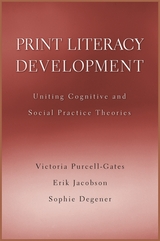 Print Literacy Development: Uniting Cognitive and Social Practice Theories
Victoria Purcell-Gates, Erik Jacobson, and Sophie Degener
Harvard University Press, 2004 Is literacy a social and cultural practice, or a set of cognitive skills to be learned and applied? Literacy researchers, who have differed sharply on this question, will welcome this book, which is the first to address the critical divide. The authors lucidly explain how we develop our abilities to read and write and offer a unified theory of literacy development that places cognitive development within a sociocultural context of literacy practices. Drawing on research that reveals connections between literacy as it is practiced outside of school and as it is taught in school, the authors argue that students learn to read and write through the knowledge and skills that they bring with them to the classroom as well as from the ways that literacy is practiced in their own different social communities.
The authors argue that until literacy development can be understood in this broader way educators will never be able to develop truly effective literacy instruction for the broad range of sociocultural communities served by schools.
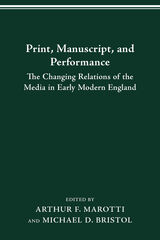 Print, Manuscript, and Performance: THE CHANGING RELATIONS OF THE MEDIA IN EARLY MODERN ENGLAND
Arthur F. Marotti and Michael D. Bristol
Ohio State University Press, 2000 The eleven essays in this volume explore the complex interactions in early modern England between a technologically advanced culture of the printed book and a still powerful traditional culture of the spoken word, spectacle, and manuscript. Scholars who work on manuscript culture, the history of printing, cultural history, historical bibliography, and the institutions of early modern drama and theater have been brought together to address such topics as the social character of texts, historical changes in notions of literary authority and intellectual property, the mutual influence and tensions between the different forms of “publication,” and the epistemological and social implications of various communications technologies.
Although canonical literary writers such as Shakespeare, Jonson, and Rochester are discussed, the field of writing examined is a broad one, embracing political speeches, coterie manuscript poetry, popular pamphlets, parochially targeted martyrdom accounts, and news reports. Setting writers, audiences, and texts in their specific historical context, the contributors focus on a period in early modern England, from the late sixteenth through the late seventeenth century, when the shift from orality and manuscript communication to print was part of large-scale cultural change. Arthur F. Marotti’s and Michael D. Bristol’s introduction analyzes some of the sociocultural issues implicit in the collection and relates the essays to contemporary work in textual studies, bibliography, and publication history.
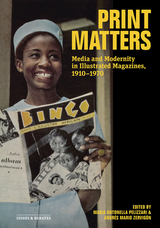 Print Matters: Media and Modernity in Illustrated Magazines, 1910–1970
Maria Antonella Pelizzari
J. Paul Getty Trust, The, 2025 This volume presents a nuanced exploration of how illustrated magazines shaped global visual culture between 1910 and 1970.
In the early to mid-twentieth century, the vast majority of printed photographs appeared in the pages of illustrated magazines. Publications such as Life, China Pictorial, Drum, Picture Post, and Ebony did more than showcase photographs; they crafted visual narratives by combining images, text, and graphics into influential cultural artifacts. These periodicals shaped public perception and mass media consensus like the Internet does today, bringing a shared visual experience to homes and newsstands around the world.
The essays in this volume delve into the technologies and visual strategies behind these publications, showing how their layouts were affected by political, commercial, editorial, and artistic factors leading up to World War II. The commentaries also explore how democracy, dictatorships, colonization, and modernity at large gave rise to experimental magazine designs, turning avant-garde art and lifestyle reporting into popular formats. Featuring over 150 images, Print Matters traces how illustrated magazines evolved across countries and continents, offering new insights into their history and enduring impact on culture and society.
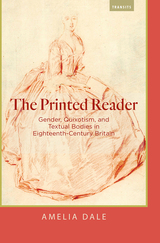 The Printed Reader: Gender, Quixotism, and Textual Bodies in Eighteenth-Century Britain
Amelia Dale
Bucknell University Press, 2019 Shortlisted for the 2021 BARS First Book Prize (British Association for Romantic Studies)
The Printed Reader explores the transformative power of reading in the eighteenth century, and how this was expressed in the fascination with Don Quixote and in a proliferation of narratives about quixotic readers, readers who attempt to reproduce and embody their readings. Through intersecting readings of quixotic narratives, including work by Charlotte Lennox, Laurence Sterne, George Colman, Richard Graves, and Elizabeth Hamilton, Amelia Dale argues that literature was envisaged as imprinting—most crucially, in gendered terms—the reader’s mind, character, and body. The Printed Reader brings together key debates concerning quixotic narratives, print culture, sensibility, empiricism, book history, and the material text, connecting developments in print technology to gendered conceptualizations of quixotism. Tracing the meanings of quixotic readers’ bodies, The Printed Reader claims the social and political text that is the quixotic reader is structured by the experiential, affective, and sexual resonances of imprinting and impressions.
Published by Bucknell University Press. Distributed worldwide by Rutgers University Press.
Printed Writings by George W. Russell: A Bibliography
George W. Russell; Compiled by Alan Denson
Northwestern University Press, 2019 This bibliography lists the books, paintings, and portraits of the mystic Irish poet George William Russell, best known by his pseudonym, “AE.” Russell was a late nineteenth-and early twentieth century Irish poet and essayist whose first book of poems, Homeward: Songs by the Way (1894), established him in what was known as the Irish Literary Revival.
 Printer's Fist: Poems
Melissa Range; Foreword by Major Jackson
Vanderbilt University Press, 2026 Melissa Range’s Printer’s Fist, awarded the 2025 Vanderbilt University Literary Prize, is a collection that tells the story of a political movement—its strides and setbacks, its unity and fractures—with a particular emphasis on print culture. Drawing upon more than a decade’s worth of archival research into nineteenth-century antislavery newspapers, pamphlets, broadsides, and more, Range highlights the expansiveness of the movement by focusing not on one, but a chorus of abolitionist voices. Her investment in celebrating Black and women's histories, in particular, offers an inclusive account of US American history, informed not only by thorough research but through a formal, poetic engagement with the past. In exploring how enslaved people’s self-emancipation was a form of resistance that preceded, operated alongside, and intertwined with organized networks of antislavery activists, Printer’s Fist will help facilitate discussions surrounding race, gender, and activism that are grounded in historical fact and emotional truth.
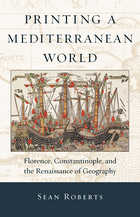 Printing a Mediterranean World: Florence, Constantinople, and the Renaissance of Geography
Sean Roberts
Harvard University Press, 2012 In 1482, the Florentine humanist and statesman Francesco Berlinghieri produced the Geographia, a book of over one hundred folio leaves describing the world in Italian verse, inspired by the ancient Greek geography of Ptolemy. The poem, divided into seven books (one for each day of the week the author “travels” the known world), is interleaved with lavishly engraved maps to accompany readers on this journey.
Sean Roberts demonstrates that the Geographia represents the moment of transition between printing and manuscript culture, while forming a critical base for the rise of modern cartography. Simultaneously, the use of the Geographia as a diplomatic gift from Florence to the Ottoman Empire tells another story. This exchange expands our understanding of Mediterranean politics, European perceptions of the Ottomans, and Ottoman interest in mapping and print. The envoy to the Sultan represented the aspirations of the Florentine state, which chose not to bestow some other highly valued good, such as the city’s renowned textiles, but instead the best example of what Florentine visual, material, and intellectual culture had to offer.
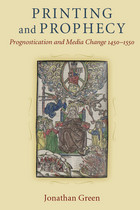 Printing and Prophecy: Prognostication and Media Change 1450-1550
Jonathan Green
University of Michigan Press, 2011 Printing and Prophecy: Prognostication and Media Change 1450-1550 examines prognostic traditions and late medieval prophetic texts in the first century of printing and their effect on the new medium of print. The many prophetic and prognostic works that followed Europe's earliest known printed book---not the Gutenberg Bible, but the Sibyl's Prophecy, printed by Gutenberg two years earlier and known today only from a single page---over the next century were perennial best sellers for many printers, and they provide the modern observer with a unique way to study the history and inner workings of the print medium. The very popularity of these works, often published as affordable booklets, raised fears of social unrest. Printers therefore had to meet customer demand while at the same time channeling readers' reactions along approved paths. Authors were packaged---and packaged themselves---in word and image to respond to the tension, while leading figures of early modern culture such as Paracelsus, Martin Luther, and Sebastian Brant used printed prophecies for their own purposes in a rapidly changing society. Based on a wide reading of many sources, Printing and Prophecy contributes to the study of early modern literature, including how print changed the relationship among authors, readers, and texts. The prophetic and astrological texts the book examines document changes in early modern society that are particularly relevant to German studies and are key texts for understanding the development of science, religion, and popular culture in the early modern period. By combining the methods of cultural studies and book history, this volume brings a new perspective to the study of Gutenberg and later printers.
 Printing for Profit: The Commercial Publishers of Jianyang, Fujian (11th–17th Centuries)
Lucille Chia
Harvard University Press, 2002 From the eleventh through the seventeenth centuries, the publishers of Jianyang in Fujian province played a conspicuous role in the Chinese book trade. Unlike the products of government and educational presses, their publications were destined for the retail book market. These publishers survived by responding to consumer demands for dictionaries, histories, geographies, medical texts, encyclopedias, primers, how-to books, novels, and anthologies. Their publications reflect the varied needs of the full range of readers in late imperial China and allow us to study the reading habits, tastes, and literacy of different social groups. The publishers of Jianyang were also businessmen, and their efforts to produce books efficiently, meet the demands of the market, and distribute their publications provide a window on commerce and industry and the growth of regional and national markets.
The broad cultural, historical, and geographical scope of the Jianyang book trade makes it an ideal subject for the study of publishing in China. Based on an extensive study of Jianyang imprints, genealogies of the leading families of printers, local histories, documents, and annotated catalogs and bibliographies, Lucille Chia has written not only a history of commercial printing but also a wide-ranging study of the culture of the book in traditional China.
 Printing Landmarks: Popular Geography and Meisho Zue in Late Tokugawa Japan
Robert Goree
Harvard University Press, 2020 Printing Landmarks tells the story of the late Tokugawa period’s most distinctive form of popular geography: meisho zue. Beginning with the publication of Miyako meisho zue in 1780, these monumental books deployed lovingly detailed illustrations and informative prose to showcase famous places (meisho) in ways that transcended the limited scope, quality, and reliability of earlier guidebooks and gazetteers. Putting into spellbinding print countless landmarks of cultural significance, the makers of meisho zue created an opportunity for readers to experience places located all over the Japanese archipelago.
In this groundbreaking multidisciplinary study, Robert Goree draws on diverse archival and scholarly sources to explore why meisho zue enjoyed widespread and enduring popularity. Examining their readership, compilation practices, illustration techniques, cartographic properties, ideological import, and production networks, Goree finds that the appeal of the books, far from accidental, resulted from specific choices editors and illustrators made about form, content, and process. Spanning the fields of book history, travel literature, map history, and visual culture, Printing Landmarks provides a new perspective on Tokugawa-period culture by showing how meisho zue depicted inspiring geographies in which social harmony, economic prosperity, and natural stability made for a peaceful polity.
 Printing Types: Their History, Forms, and Use; A Study in Survivals
Daniel Berkeley Updike
Harvard University Press In his comprehensive study of types from the earliest times to the twentieth century, Daniel Berkeley Updike, founder of the famous Merrymount Press of Boston, traces the sequence of development in typography and discusses the relative importance of each period and the lesson that it holds for the modern printer. The 367 illustrations reproduce carefully selected pages from rare and beautiful books. The text constitutes a running commentary on the historical and artistic significance of these specimens, which exemplify the best work of printers and type founders from Gutenberg to Bruce Rogers. The closing chapters on choice of type and on the industrial conditions of the past and their relationship to the problem of printers today are particularly valuable.
Printing Types is the master work of a master printer, collecting in two volumes a wealth of material once scattered through widely diverse sources. Everyone interested in the graphic arts will welcome the reissue of this classic on the art of printing.
 Printing Types: Their History, Forms, and Use; A Study in Survivals
Daniel Berkeley Updike
Harvard University Press In his comprehensive study of types from the earliest times to the twentieth century, Updike, founder of the famous Merrymount Press of Boston, traces the sequence of development in typography and discusses the relative importance of each period and the lesson that it holds for the modern printer. The 367 illustrations reproduce carefully selected pages from rare and beautiful books. The text constitutes a running commentary on the historical and artistic significance of these specimens, which exemplify the best work of printers and type founders from Gutenberg to Bruce Rogers. The closing chapters on choice of type and on the industrial conditions of the past and their relationship to the problem of printers today are particularly valuable.
Printing Types is the master work of a master printer, collecting in two volumes a wealth of material once scattered through widely diverse sources. Everyone interested in the graphic arts will welcome the reissue of this classic on the art of printing.
Prints and Books: Informal Papers
William M. Ivins Jr.
Harvard University Press Although—or perhaps because—William Ivins insists upon calling his essays “informal papers,” they will be found to possess an unusual charm and stimulation for the general reader not interested in the technicalities of either literature or art. His position in the Metropolitan Museum of Art has, as he says, been “really a bit of a lark, because it enabled him to poke about in so many interesting nooks and crannies which are ordinarily forgotten.” His book, then, “is by way of being a record of some of the happiness that has come to a man in a museum”; and if anyone carries in his mind a lingering notion that Ivins’s is a dusty job, he has but to yield to the incomparable conversation of these pages in order to learn his mistake. The volume is a farrago of information about prints, engravers, illustrated books, ornament, bookplates, and museum work. There are many illustrations in line and half-tone.
Prints as Agents of Global Exchange: 1500-1800
Heather Madar
Amsterdam University Press, 2022 The significance of the media and communications revolution occasioned by printmaking was profound. Less a part of the standard narrative of printmaking’s significance is recognition of the frequency with which the widespread dissemination of printed works also occurred beyond the borders of Europe and consideration of the impact of this broader movement of printed objects. Within a decade of the invention of the Gutenberg press, European prints began to move globally. Over the course of the fifteenth to the eighteenth centuries, numerous prints produced in Europe traveled to areas as varied as Turkey, India, Iran, Ethiopia, China, Japan and the Americas, where they were taken by missionaries, artists, travelers, merchants and diplomats. This collection of essays explores the global circulation of knowledge, both written and visual, that occurred by means of prints in the Early Modern period.
Prior to Meaning: The Protosemantic and Poetics
Steve McCaffery
Northwestern University Press, 2000 Prior to Meaning collects a decade of writing on poetry, language, and the theory of writing by one of the most innovative and conceptually challenging poets of the last twenty-five years. In essays that are wide ranging, richly detailed, and novel in their surprising juxtapositions of disparate material, Steve McCaffery works to undo the current bifurcation between theory and practice--to show how a poetic text might be the source rather than the product of the theoretical against which it must be read.
Priscilla Cooper Tyler and the American Scene, 1816-1889
Elizabeth Tyler Coleman
University of Alabama Press, 2006 Elizabeth Tyler Coleman was a great-granddaughter of President John Tyler and a graduate of the University of Alabama and of Swarthmore College. She was the first female faculty member in the English Department at the University of Alabama, where she taught from 1927 to 1962.
 The Prism of Human Rights: Seeking Justice amid Gender Violence in Rural Ecuador
Karin Friederic
Rutgers University Press, 2023 Gender violence has been at the forefront of women’s human rights struggles for decades, shaping political movements and NGO and government programs related to women’s empowerment, community development, and public health. Drawing on over twenty years of research and activism in rural Ecuador, Karin Friederic provides a remarkably intimate view of what these rights-based programs actually achieve over the long term. The Prism of Human Rights brings us into the lives of women, men, and children who find themselves entangled in intimate partner violence, structural violence, political economic change, and a global cultural project in which “rights” are associated with modernity, development, and democratic states. She details the multiple forms of violence that rural women experience; shows the diverse ways they make sense of, endure, and combat this violence; and helps us understand how people are grappling with new ideas of gender, rights, and even of violence itself. Ultimately, Friederic demonstrates that rights-based interventions provide important openings for women seeking a life free of violence, but they also unwittingly expose “liberated” women to more extreme dynamics of structural violence. Thus, these interventions often reduce women’s room to maneuver and encourage communities to hide violence in order to appear “modern” and “developed.” This analysis of human rights in practice is essential for anyone seeking to promote justice in a culturally responsible manner, and for anyone who hopes to understand how the globalization of rights, legal institutions, and moral visions is transforming distant locales and often perpetuating violence in the process.
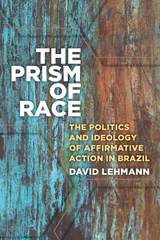 The Prism of Race: The Politics and Ideology of Affirmative Action in Brazil
David Lehmann
University of Michigan Press, 2018 Brazil has developed a distinctive response to the injustices inflicted by the country’s race relations regime. Despite the mixed racial background of most Brazilians, the state recognizes people’s racial classification according to a simple official scheme in which those self-assigned as black, together with “brown” and “indigenous” (preto-pardo-indigena), can qualify for specially allocated resources, most controversially quota places at public universities. Although this quota system has been somewhat successful, many other issues that disproportionately affect the country’s black population remain unresolved, and systemic policies to reduce structural inequality remain off the agenda.
In The Prism of Race, David Lehmann explores, theoretically and practically, issues of race, the state, social movements, and civil society, and then goes beyond these themes to ask whether Brazilian politics will forever circumvent the severe problems facing the society by co-optation and by tinkering with unjust structures. Lehmann disrupts the paradigm of current scholarly thought on Brazil, placing affirmative action disputes in their political and class context, bringing back the concept of state corporatism, and questioning the strength and independence of Brazilian civil society.
 Prisma’s English-Swedish Dictionary
Prisma
University of Minnesota Press, 1997 Newly revised single-volume edition!
Prisma's Abridged English-Swedish and Swedish-English Dictionary contains more than 85,000 of the most commonly used English and Swedish words and phrases. This long-awaited revision combines Prisma's best selling dictionaries of Swedish to English and English to Swedish in an easy-to-handle, abridged, single-volume edition. Notes for the use of the dictionary are provided in both English and Swedish. It includes phonetic transcriptions of Swedish entries as well as codes for the inflection of Swedish nouns, adjectives, and verbs. This text is the standard dictionary for English and Swedish, the best selling dictionary of its kind in the world. Fully revised and updated, this durable and compact dictionary is ideal for people who in the course of their studies, work, or travel need a concise dictionary of English and Swedish. The single-volume abridged dictionary will be an important addition to every bookstore's foreign language section.
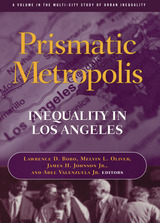 Prismatic Metropolis: Inequality in Los Angeles
Lawrence D. Bobo
Russell Sage Foundation, 2000 This book cuts through the powerful mythology surrounding Los Angeles to reveal the causes of inequality in a city that has weathered rapid population change, economic restructuring, and fractious ethnic relations. The sources of disadvantage and the means of getting ahead differ greatly among the city's myriad ethnic groups. The demand for unskilled labor is stronger here than in other cities, allowing Los Angeles's large population of immigrant workers with little education to find work in light manufacturing and low-paid service jobs. A less beneficial result of this trend is the increased marginalization of the city's low-skilled black workers, who do not enjoy the extended ethnic networks of many of the new immigrant groups and who must contend with persistent negative racial stereotypes. Patterns of residential segregation are also more diffuse in Los Angeles, with many once-black neighborhoods now split evenly between blacks, Hispanics, Asians, and other minorities. Inequality in Los Angeles cannot be reduced to a simple black-white divide. Nonetheless, in this thoroughly multicultural city, race remains a crucial factor shaping economic fortunes. A Volume in the Multi-City Study of Urban Inequality
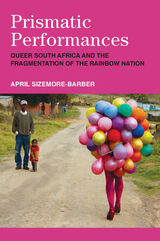 Prismatic Performances: Queer South Africa and the Fragmentation of the Rainbow Nation
April Sizemore-Barber
University of Michigan Press, 2021 At his 1994 inauguration, South African president Nelson Mandela announced the “Rainbow Nation, at peace with itself and the world.” This national rainbow notably extended beyond the bounds of racial coexistence and reconciliation to include “sexual orientation” as a protected category in the Bill of Rights. Yet despite the promise of equality and dignity, the new government’s alliance with neoliberal interests and the devastation of the AIDS epidemic left South Africa an increasingly unequal society.
Prismatic Performances focuses on the queer embodiments that both reveal and animate the gaps between South Africa’s self-image and its lived realities. It argues that performance has become a key location where contradictions inherent to South Africa’s post-apartheid identity are negotiated. The book spans 30 years of cultural production and numerous social locations and includes: a team of black lesbian soccer players who reveal and redefine the gendered and sexed limitations of racialized “Africanness;” white gay performers who use drag and gender subversion to work through questions of racial and societal transformation; black artists across the arts who have developed aesthetics that place on display their audiences’ complicity in the problem of sexual violence; and a primarily heterosexual panAfrican online soap opera fandom community who, by combining new virtual spaces with old melodramatic tropes allow for extended deliberation and new paradigms through which African same-sex relationships are acceptable.
Prismatic Performances contends that when explicitly queer bodies emerge onto public stages, audiences are made intimately aware of their own bodies’ identifications and desires. As the sheen of the New South Africa began to fade, these performances revealed the inadequacy and, indeed, the violence, of the Rainbow Nation as an aspirational metaphor. Simultaneously they created space for imagining new radical configurations of belonging.
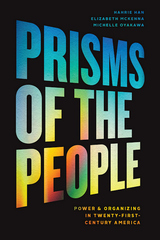 Prisms of the People: Power & Organizing in Twenty-First-Century America
Hahrie Han, Elizabeth McKenna, and Michelle Oyakawa
University of Chicago Press, 2021 Grassroots organizing and collective action have always been fundamental to American democracy but have been burgeoning since the 2016 election, as people struggle to make their voices heard in this moment of societal upheaval. Unfortunately much of that action has not had the kind of impact participants might want, especially among movements representing the poor and marginalized who often have the most at stake when it comes to rights and equality. Yet, some instances of collective action have succeeded. What’s the difference between a movement that wins victories for its constituents, and one that fails? What are the factors that make collective action powerful?
Prisms of the People addresses those questions and more. Using data from six movement organizations—including a coalition that organized a 104-day protest in Phoenix in 2010 and another that helped restore voting rights to the formerly incarcerated in Virginia—Hahrie Han, Elizabeth McKenna, and Michelle Oyakawa show that the power of successful movements most often is rooted in their ability to act as “prisms of the people,” turning participation into political power just as prisms transform white light into rainbows. Understanding the organizational design choices that shape the people, their leaders, and their strategies can help us understand how grassroots groups achieve their goals.
Linking strong scholarship to a deep understanding of the needs and outlook of activists, Prisms of the People is the perfect book for our moment—for understanding what’s happening and propelling it forward.
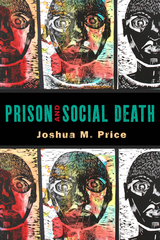 Prison and Social Death
Price, Joshua M
Rutgers University Press, 2015 The United States imprisons more of its citizens than any other nation in the world. To be sentenced to prison is to face systematic violence, humiliation, and, perhaps worst of all, separation from family and community. It is, to borrow Orlando Patterson’s term for the utter isolation of slavery, to suffer “social death.” In Prison and Social Death, Joshua Price exposes the unexamined cost that prisoners pay while incarcerated and after release, drawing upon hundreds of often harrowing interviews conducted with people in prison, parolees, and their families.
Price argues that the prison separates prisoners from desperately needed communities of support from parents, spouses, and children. Moreover, this isolation of people in prison renders them highly vulnerable to other forms of violence, including sexual violence. Price stresses that the violence they face goes beyond physical abuse by prison guards and it involves institutionalized forms of mistreatment, ranging from abysmally poor health care to routine practices that are arguably abusive, such as pat-downs, cavity searches, and the shackling of pregnant women. And social death does not end with prison. The condition is permanent, following people after they are released from prison. Finding housing, employment, receiving social welfare benefits, and regaining voting rights are all hindered by various legal and other hurdles. The mechanisms of social death, Price shows, are also informal and cultural. Ex-prisoners face numerous forms of distrust and are permanently stigmatized by other citizens around them.
A compelling blend of solidarity, civil rights activism, and social research, Prison and Social Death offers a unique look at the American prison and the excessive and unnecessary damage it inflicts on prisoners and parolees.
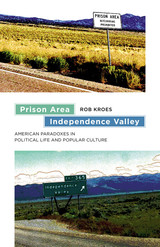 Prison Area, Independence Valley: American Paradoxes in Political Life and Popular Culture
Rob Kroes
Dartmouth College Press, 2015 The study of prisons brought Tocqueville to America. For Rob Kroes, one of Europe’s most distinguished authorities on contemporary American culture, it was rather the other way around. For Kroes, it was deep knowledge of American culture that brought him back to America and face to face with a couple of highway signs, Tocquevillian in their portent, that invited motorists to exit from Interstate 80 in Nevada toward a place called Independence Valley and to keep their eyes open for a “Prison Area.” In this collection of essays, Kroes invites us to take these two signs seriously for their capacity to deepen our insights into America’s cultural contradictions, especially how, after the September 11, 2001, attacks on the World Trade Center and Pentagon, the US government’s response altered the meaning of America for Americans and Europeans alike. The author’s fascination with the myriad ways in which America changes face, from hard power to soft, from uses of force to the power of entertainment, but always holding the attention of publics across the globe, is what ties his work together. The essays here touch on diverse topics such as photography (“Falling Man” and Holocaust imagery), music (in Broadway and Hollywood musicals), film (Django Unchained), American exceptionalism (in an interesting counter to dog-eared dogma), and the difficulties of the first “white president of color.” Like his predecessors, Tocqueville and Johan Huizinga, Kroes offers a clear-eyed assessment of America on the ground, love it or hate it. This readable and sharp-penned critique of America and American culture and power will appeal to Americanists across a broad swath of disciplines.
 The Prison before the Panopticon: Incarceration in Ancient and Modern Political Philosophy
Jacob Abolafia
Harvard University Press, 2024 A pioneering history of incarceration in Western political thought.
The prison as we know it is a relatively new institution, established on a large scale in Europe and the United States only during the Enlightenment. Ideas and arguments about penal incarceration, however, long predate its widespread acceptance as a practice. The Prison before the Panopticon argues that debates over imprisonment are as old as Western political philosophy itself. This groundbreaking study examines the role of the prison in the history of political thought, detailing the philosophy of incarceration as it developed from Demosthenes, Plato, and Philo to Thomas More, Thomas Hobbes, and Jeremy Bentham.
Jacob Abolafia emphasizes two major themes that reappear in philosophical writing about the prison. The first is the paradox of popular authorization. This is the problem of how to justify imprisonment in light of political and theoretical commitments to freedom and equality. The second theme is the promise of rehabilitation. Plato and his followers insist that imprisonment should reform the prisoner and have tried to explain in detail how incarceration could have that effect.
While drawing on current historical scholarship to carefully situate each thinker in the culture and penal practices of his own time and place, Abolafia also reveals the surprisingly deep and persistent influence of classical antiquity on modern theories of crime and punishment. The Prison before the Panopticon is a valuable resource not only about the legitimacy of the prison in an age of mass incarceration but also about the philosophical justifications for penal alternatives like restorative justice.
 Prison Blossoms: Anarchist Voices from the American Past
Alexander Berkman, Henry Bauer, and Carl Nold
Harvard University Press, 2011 In 1892, unrepentant anarchists Alexander Berkman, Henry Bauer, and Carl Nold were sent to the Western Pennsylvania State Penitentiary for the attempted assassination of steel tycoon Henry Clay Frick. Searching for a way to continue their radical politics and to proselytize among their fellow inmates, these men circulated messages of hope and engagement via primitive means and sympathetic prisoners. On odd bits of paper, in German and in English, they shared their thoughts and feelings in a handwritten clandestine magazine called “Prison Blossoms.” This extraordinary series of essays on anarchism and revolutionary deeds, of prison portraits and narratives of homosexuality among inmates, and utopian poems and fables of a new world to come not only exposed the brutal conditions in American prisons, where punishment cells and starvation diets reigned, but expressed a continuing faith in the "beautiful ideal" of communal anarchism.
Most of the "Prison Blossoms" were smuggled out of the penitentiary to fellow comrades, including Emma Goldman, as the nucleus of an exposé of prison conditions in America’s Gilded Age. Those that survived relatively unrecognized for a century in an international archive are here transcribed, translated, edited, and published for the first time. Born at a unique historical moment, when European anarchism and American labor unrest converged, as each sought to repel the excesses of monopoly capitalism, these prison blossoms peer into the heart of political radicalism and its fervent hope of freedom from state and religious coercion.
 Prison Cultures: Performance, Resistance and Desire
Aylwyn Walsh
Intellect Books, 2023 The first systematic examination of women in prison and performances in and of the institution.
Using a feminist approach to reach beyond tropes of “bad girls” and simplistic inside vs. outside dynamics, Prison Cultures examines how cultural products can perpetuate or disrupt hegemonic understandings of the world of prisons. Focusing primarily on the UK and using examples from pop cultures, the book identifies how and why prison functions as a fixed field and postulates new ways of viewing performances in and of prison that trouble the institution. A new contribution to the fields of feminist cultural criticism and prison studies, Aylwyn Walsh explores how the development of a theory of resistance and desire is central to the understanding of women’s incarceration. It problematizes the prevalence of purely literary analysis or case studies that proffer particular models of arts practice as transformative of offending behavior.
Prison Etiquette: The Convict's Compendium of Useful Information
Edited by Holley Cantine and Dachine Rainer. Foreword by Philip Metres.
Southern Illinois University Press, 2001 Of the fifty thousand Americans who declared themselves conscientious objectors during World War II, nearly six thousand went to prison, many serving multiyear sentences in federal lockups. Some conscientious objectors, notably Robert Lowell, William Everson, and William Stafford, went on to become important figures in the literary life of their country, while others were participants and teachers in the civil rights and antiwar movements of the 1950s, 1960s, and 1970s. This long out-of-print book, reprinted from the rare original 1951 edition, collects firsthand accounts by conscientious objectors who were imprisoned for their beliefs. Prison Etiquette is illustrated with eleven line drawings by Lowell Naeve.
The Prison Experience: Disciplinary Institutions and Their Inmates in Early Modern Europe
Pieter Spierenburg
Amsterdam University Press, 2007
Though the prison is central to the penal system of most modern nations, many believe that imprisonment did not become a major judicial sanction until the nineteenth century. In this readable history, Pieter Spierenburg traces the evolution of the prison during the early modern period and illustrates the important role it has played as both disciplinary institution and penal option from the late sixteenth century onward. Placing particular emphasis on the prisons of the Netherlands, Germany, and France, The Prison Experience examines not only the long-term nature of prisons and the historical conceptions of their prisoners but also looks at the daily lives of inmates—supplementing our understanding of social change and day-to-day life in early modern Europe.
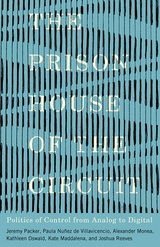 The Prison House of the Circuit: Politics of Control from Analog to Digital
Jeremy Packer
University of Minnesota Press, 2023 Has society ceded its self-governance to technogovernance?
The Prison House of the Circuit presents a history of digital media using circuits and circuitry to understand how power operates in the contemporary era. Through the conceptual vocabulary of the circuit, it offers a provocative model for thinking about governance and media. The authors, writing as a collective, provide a model for collective research and a genealogical framework that interrogates the rise of digital society through the lens of Foucault’s ideas of governance, circulation, and power. The book includes five in-depth case studies investigating the transition from analog media to electronic and digital forms: military telegraphy and human–machine incorporation, the establishment of national electronic biopolitical governance in World War I, media as the means of extending spatial and temporal policing, automobility as the mechanism uniting mobility and media, and visual augmentation from Middle Ages spectacles to digital heads-up displays. The Prison House of the Circuit ultimately demonstrates how contemporary media came to create frictionless circulation to maximize control, efficacy, and state power.
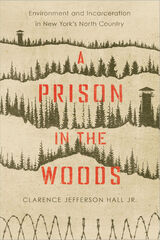 A Prison in the Woods: Environment and Incarceration in New York's North Country
Clarence Jefferson Hall
University of Massachusetts Press, 2020 Since the mid-nineteenth century, Americans have known the Adirondack Mountains of upstate New York as a site of industrial production, a place to heal from disease, and a sprawling outdoor playground that must be preserved in its wild state. Less well known, however, has been the area's role in hosting a network of state and federal prisons. A Prison in the Woods traces the planning, construction, and operation of penitentiaries in five Adirondack Park communities from the 1840s through the early 2000s to demonstrate that the histories of mass incarceration and environmental consciousness are interconnected.
Clarence Jefferson Hall Jr. reveals that the introduction of correctional facilities—especially in the last three decades of the twentieth century—unearthed long-standing conflicts over the proper uses of Adirondack nature, particularly since these sites have contributed to deforestation, pollution, and habitat decline, even as they've provided jobs and spurred economic growth. Additionally, prison plans have challenged individuals' commitment to environmental protection, tested the strength of environmental regulations, endangered environmental and public health, and exposed tensions around race, class, place, and belonging in the isolated prison towns of America's largest state park.
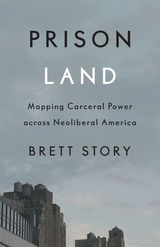 Prison Land: Mapping Carceral Power across Neoliberal America
Brett Story
University of Minnesota Press, 2019 From broken-window policing in Detroit to prison-building in Appalachia, exploring the expansion of the carceral state and its oppressive social relations into everyday life Prison Land offers a geographic excavation of the prison as a set of social relations—including property, work, gender, and race—enacted across various landscapes of American life. Prisons, Brett Story shows, are more than just buildings of incarceration bound to cycles of crime and punishment. Instead, she investigates the production of carceral power at a range of sites, from buses to coalfields and from blighted cities to urban financial hubs, to demonstrate how the organization of carceral space is ideologically and materially grounded in racial capitalism. Story’s critically acclaimed film The Prison in Twelve Landscapes is based on the same research that informs this book. In both, Story takes an expansive view of what constitutes contemporary carceral space, interrogating the ways in which racial capitalism is reproduced and for which police technologies of containment and control are employed. By framing the prison as a set of social relations, Prison Land forces us to confront the production of new carceral forms that go well beyond the prison system. In doing so, it profoundly undermines both conventional ideas of prisons as logical responses to the problem of crime and attachment to punishment as the relevant measure of a transformed criminal justice system.
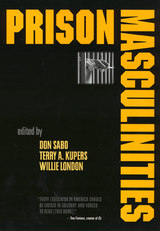 Prison Masculinities
Don Sabo
Temple University Press, 2001 This book explores the frightening ways in which our prisons mirror the worst aspects of society-wide gender relations. It is part of the growing research on men and masculinities. The collection is unusual in that it contributions from activists, academics, and prisoners.
The opening section, which features an essay by Angela Davis, focuses on the historical roots of the prison system, cultural practices surrounding gender and punishment, and the current expansion of corrections into the "prison-industrial complex."
The next section examines the dominant or subservient roles that men play in prison and the connections between this hierarchy and male violence. Another section looks at the spectrum of intimate relations behind bars, from rape to friendship, and another at physical and mental health.
The last section is about efforts to reform prisons and prison masculinities, including support groups for men. It features an essay about prospects for post-release success in the community written by a man who, after doing time in Soledad and San Quentin, went on to get a doctorate in counseling.
The contributions from prisoners include an essay on enforced celibacy by Mumia Abu-Jamal, as well as fiction and poetry on prison health policy, violence, and intimacy. The creative contributions were selected from the more than 200 submissions received from prisoners.
 Prison Officers and Their World
Kelsey Kauffman
Harvard University Press, 1988 The 1970s were tumultuous years in American prisons, beginning with the bloody uprising at Attica and ending with the even bloodier one at New Mexico State. The Massachusetts prison system was one of the most seriously afflicted. Murders, suicides, riots, strikes, and mass escapes were only the most obvious manifestations of a system in turmoil. Attempts at reform foundered badly there, in part because of strong opposition from prison "guards" or
officers. Kelsey Kauffman's unsparing account of life "on the inside" during that troubled time takes the usually neglected perspective of prison officers. The setting is primarily the maximum-security institution, Walpole; the voices are those of men who felt as trapped as the inmates they guarded.
Prison officers have a subculture and "code" of behavior as binding as that of inmates. As Kauffman quickly makes clear, what recruits learned from their fellow officers—and inmates—was far more important in how they adjusted to the harsh prison environment than was the inadequate instruction they received from the Department of Correction. She describes in detail the role of officers in the everyday life of the prison, their relationship to a seemingly uncaring prison administration, their power struggles with inmates, their methods for coping with inmate violence, and the consequences of their own resort to violence against inmates.
Through the pain filled words of the officers themselves, she chronicles the devastating effect that working in prison had on them and their families. Prison officers, Kauffman argues, are a badly misunderstood and often maligned group. Failure to appreciate their problems and perspectives has inevitably undermined attempts to reform prisons and contributed to the general misery of those who live and work behind prison walls. Although the events that Kauffman discusses helong to a particularly violent time and place, the underlying problems do not. In varying intensity they characterize most prisons most of the time.
 The Prison: Policy and Practice
Gordon J. Hawkins
University of Chicago Press, 1977 Despite lethal explosions of violence from within and critical assaults from without, it seems certain that prisons will continue to exist for the foreseeable future. Gordon Hawkins argues that certain key issues which attend the use of imprisonment as a penal method must be dealt with realistically. Beginning with a discussion of the ideology of imprisonment and the principal lines of criticism directed at it, Hawkins examines such issues as the prisonization hypothesis (the theory that prisons serve as a training ground for criminals), the role of the prison guard, work in prisons, and the use of prisoners as research subjects for medical experiments. He also deals with the prisoners' rights movement and its implications for the future of prison administration. Hawkins not only makes specific recommendations for reform, he also carefully appraises the barriers which obstruct their implementation.
"Hawkins devotes a large portion of this relatively short book to a discussion of some of the really crucial policy activities that tend to stifle meaningful reform and then goes on to tell how at least some of these policies can be altered. . . . The book concludes with a chapter devoted to a discussion of impediments to change that should be required reading for all serious students of penology."—Choice
"Hawkins has added a much needed down-to-earch analysis of prison. . . . This is not a pessimistic book. It is a realistic book. It avoids the pitfall of utopian and single-factor solutions to an extremely complex problem."—Graeme R. Newman, Annals of the American Academy of Political and Social Science
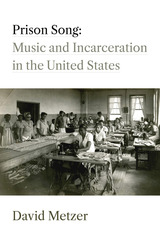 Prison Song: Music and Incarceration in the United States
David Metzer
University of Michigan Press, 2026 From Johnny Cash to Jay-Z, musicians have long used their voices to challenge the injustices of the prison system. Prison Song: Music and Incarceration in the United States reveals how musicians have confronted the prison system by telling the life stories of imprisoned individuals, creating empathetic bonds between listeners and those individuals, and critiquing the racial and social inequalities that incarceration preys upon. Prison Song takes a broad, interdisciplinary approach to explore how artists across genres—hip hop, country, blues, folk, rock, jazz, and classical—have protested the prison system. David Metzer examines the works of incarcerated, formerly incarcerated, and non-incarcerated musicians from diverse racial and ethnic backgrounds. Drawing on a wide range of sources, including prison records, government reports, legislation, court decisions, and scholarship from carceral studies, each chapter reveals how musicians responded to developments in the prison system at particular historical moments and how their works have shaped public understanding of the prison system in the United States.
 Prison Writings: The Roots of Civilisation
Abdullah Ocalan
Pluto Press, 2007 Abudullah Öcalan was the most wanted man in Turkey for almost two decades until his kidnapping and arrest in 1999. He has been in prison ever since. He is the founder of the Kurdish Workers Party (PKK). From 1984, under his leadership, the PKK fought for an independent Kurdish state in southeast Turkey. In a sustained popular uprising, tens of thousands of PKK guerrillas took on the second largest army in NATO.
Since his imprisonment, Öcalan has written extensively in Kurdish history. This book brings together his writings for the first time. Breathtaking in scope, it provides a broad Marxist perspective on ancient Middle Eastern history, incorporating the rise of the major religions (Islam, Christianity, and Judaism), and defining the Kurdish position within this, from the ancient Sumerian civilization through the feudal age, the birth of capitalism, and beyond.
"Very readable. It is a tour-de-force."
---Ghada Talhami, D. K. Pearsons Professor of Political, Lake Forest College
"We would expect Abudullah Öcalan to write a political treatise. Instead, he has penned a monumental history of the ancient Near East that offers a grand vision. . . . This is the first truly postcolonial history of Mesopotamia."
---Randall H. McGuire, Professor of Anthropology, Binghamton University
Prisoner for Polygamy: The Memoirs and Letters of Rudger Clawson at the Utah Territorial Penitentiary, 1884-87
Edited by Stan Larson
University of Illinois Press, 1993 This collection of the prison memoirs and letters of the first Mormon
convicted of violating the Edmunds Law, which prohibited polygamy, provides
a unique perspective on this period of Utah history. Rudger Clawson (1857-1943)
was a prominent member of the Church of Jesus Christ of Latter-day Saints,
serving as missionary, stake president, apostle, president of the Quorum
of the Twelve Apostles, and counselor in the First Presidency.
His memoirs of three years as a "cohab" in the Utah Territorial
Penitentiary are published here for the first time. They reflect the pride
Mormon polygamists felt at being "prisoners for conscience sake,"
and they include discussions of Mormon doctrines, accounts of daring prison
escapes, details of prison life, and the sense of a husband's frustration
at being separated from his plural wife.
 Prisoner of Her Past: A Son's Memoir
Howard Reich
Northwestern University Press, 2011 Until February 15, 2001, Howard Reich’s mother, Sonia, had managed to keep almost everything about her experience of the Holocaust from her son. That night, she packed some clothes and fled her house in Skokie, Illinois, convinced that someone was trying to kill her. This was the first indication that she was suffering from late-onset post traumatic stress disorder, a little-known condition that can emerge decades after the initial trauma. For Howard, it was also the opening of a window onto his mother’s past.
In Prisoner of Her Past, Howard Reich has written a moving memoir about growing up as the child of Holocaust survivors and finding refuge from silence and fear in the world of jazz. It is only when Sonia’s memories overwhelm her and Howard begins to piece together her story that he comes to understand how his parents’ lives shaped his own. The paperback edition includes an epilogue by the author that relates developments since the publication of the cloth edition.
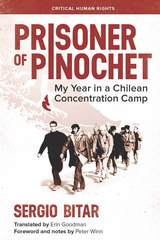 Prisoner of Pinochet: My Year in a Chilean Concentration Camp
Sergio Bitar
University of Wisconsin Press, 2017 September 11, 1973: Chilean military forces under General Augusto Pinochet overthrew the elected government of President Salvador Allende, bombing the presidential palace with the president inside. Minister of Mining Sergio Bitar was forcibly detained along with other members of the Allende cabinet and confined on bleak, frigid Dawson Island in the Magellan Straits.
Prisoner of Pinochet is the gripping first-person chronicle of Bitar's year as a political prisoner before being expelled from Chile; a poignant narrative of men held captive together in a labor camp under harsh conditions, only able to guess at their eventual fate; and an insightful memoir of the momentous events of the early 1970s that led to seventeen years of bloody authoritarian rule in Chile. Available in English for the first time, this edition includes maps and photos from the 1970s and contextual notes by historian Peter Winn.
 Prisoner of Wars: A Hmong Fighter Pilot's Story of Escaping Death and Confronting Life
Chia Youyee Vang
Temple University Press, 2021 Retired Captain Pao Yang was a Hmong airman trained by the U.S. Air Force and CIA to fly T-28D aircraft for the U.S. Secret War in Laos. However, his plane was shot down during a mission in June 1972. Yang survived, but enemy forces captured him and sent him to a POW camp in northeastern Laos. He remained imprisoned for four years after the United States withdrew from Vietnam because he fought on the American side of the war. Prisoner of Wars shows the impact the U.S Secret War in Laos had on Hmong combatants and their families. Chia Vang uses oral histories thatpoignantly recount Yang’s story and the deeply personal struggles his loved ones—who feared he had died—experienced in both Southeast Asia and the United States. As Yang eventually rebuilt his life in America, he grappled with issues of freedom and trauma. Yang’s life provides a unique lens through which to better understand the lasting impact of the wars in Southeast Asia and the diverse journeys that migrants from Asia made over the last two centuries. Prisoner of Wars makes visible an aspect of the collateral damage that has been left out of dominant Vietnam War narratives.
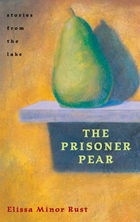 The Prisoner Pear: Stories from the Lake
Elissa Minor Rust
Ohio University Press, 2005 The twelve stories in The Prisoner Pear: Stories from the Lake take place in an affluent suburb of Portland, Oregon, but they could be taken from any number of similar enclaves across the United States. These stories infuse stark reality with occasional hints of magical realism to explore what the American dream means to twenty-first-century suburbanites. In a city where the homecoming queen still makes the front page of the weekly newspaper, ducks caught in storm drains and stolen campaign signs make up the bulk of the paper’s crime reports. The community’s hidden complexities, however, rival those of Sherwood Anderson’s Winesburg, Ohio. Each of the stories begins with an entry from the newspaper’s police blotter. Elissa Minor Rust fills in the background to these small, odd events-a headless parakeet found in a mailbox, a nude jogger, an alarmingly deathlike discarded teddy bear. Her stories, both humorous and disturbing, probe beneath the clear, hard surface of a community into the murky depths beneath. The lake at the center of town is a constant in the lives of this town’s people, and it reappears throughout the book as a symbol of wealth and power, of love and loss. The Prisoner Pear offers a rare look inside the heart of suburban America. Reading these stories is, as one character observes, “like seeing the town from the inside out, as if the lake was its heart and the rest merely its bones and skin.”
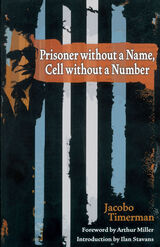 Prisoner Without a Name, Cell Without a Number
Jacobo Timerman
University of Wisconsin Press, 2002 "At two in the morning of April 15, 1977, twenty armed men in civilian clothes arrested Jacobo Timerman, editor and publisher of a leading Buenos Aires newspaper. Thus began thirty months of imprisonment, torture, and anti-Semitic abuse. . . . Unlike 15,000 other Argentines, 'the disappeared,' Timerman was eventually released into exile. His testimony [is] gripping in its human stories, not only of brutality but of courage and love; important because it reminds us how, in our world, the most terrible fantasies may become fact."—New York Times, Books of the Century
"It ranks with Hannah Arendt's Eichmann in Jerusalem in its examination of the totalitarian mind, the role of anti-Semitism, the silence."—Eliot Fremont-Smith, Village Voice
"It is impossible to read this proud and piercing account of [Timerman's] suffering and his battles without wanting to be counted as one of Timerman's friends."—Michael Walzer, New York Review of Books
"Timerman was a living reminder that real prophets are irritants and not messengers of reassurance. He told it like it is, whether in Argentina, Israel, Europe, or the United States."—Arthur Miller
 Prisoners after War: Veterans in the Age of Mass Incarceration
Jason A. Higgins
University of Massachusetts Press, 2024 The United States has both the largest, most expensive, and most powerful military and the largest, most expensive, and most punitive carceral system in the history of the world. Since the American War in Vietnam, hundreds of thousands of veterans have been incarcerated after their military service. Identifying the previously unrecognized connections between American wars and mass incarceration, Prisoners after War reaches across lines of race, class, and gender to record the untold history of incarcerated veterans over the past six decades. Having conducted dozens of oral history interviews, Jason A. Higgins traces the lifelong effects of war, inequality, disability, and mental illness, and explores why hundreds of thousands of veterans, from Vietnam to Afghanistan, were caught up in the carceral system. This original study tells an intergenerational history of state-sanctioned violence, punishment, and inequality, but its pages also resonate with stories of survival and redemption, revealing future possibilities for reform and reparative justice.
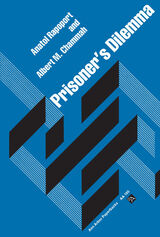 Prisoner's Dilemma
Anatol Rapoport and Albert M. Chammah
University of Michigan Press, 1965 The term "Prisoner's Dilemma" comes from the original anecdote used to illustrate this game of strategy. Two prisoners, held incommunicado, are charged with the same crime. They can be convicted only if either confesses. If both prisoners confess, their payoff is minus one. If neither confesses, it is plus one. If only one confesses, he is set free for having turned state's evidence and is given a reward of plus two to boot. The prisoner who holds out is convicted on the strength of the other's testimony and is given a more severe sentence than if he had confessed. His payoff is minus two. It is in the interest of each to confess no matter what the other does, but it is in their collective interest to hold out. There is no satisfactory solution to the paradox of this game. Its simplicity is misleading. What seems rational from your own point of view, turns out to be detrimental in the end. This book is an account of many experiments in which Prisoner's Dilemma was played. Analyzing the results, one can learn how people are motivated to trust or distrust their partners, to keep faith or to betray, to be guided by joint or selfish interest. The method represents an important step toward building a bridge between psychology which is based on hard data and reproducible experiments and psychology which is concerned with internal conflict.
Prisoners of Hope: The Silver Age of the Italian Jews, 1924–1974
H. Stuart Hughes
Harvard University Press, 1983 The eminent cultural historian H. Stuart Hughes examines the works of Italo Svevo, Alberto Moravia, Carlo Levi, Primo Levi, Natalia Ginzburg, and Giorgio Bassani—six Italian prose writers of Jewish or part-Jewish origin—and gracefully shows how these writers combine in various measures their ancestral Jewish heritage with recent experiences of antisemitic persecution.
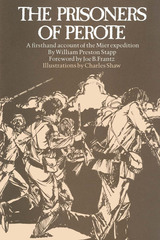 The Prisoners of Perote
By William Preston Stapp
University of Texas Press, 1977 In late 1842, Private William Preston Stapp and about three hundred other citizens of the Republic of Texas took it upon themselves to invade Mexico. They intended to retaliate for a recent Mexican attack on San Antonio and to humiliate President Sam Houston, who had been hesitant to seek revenge. Stapp provides a closely observed, day-by-day narrative of the disastrous adventure later known as the Mier expedition. While his style might be described as "elegantly restrained" in comparison to the literary excesses of that early Victorian age, Stapp's flair for drama and description makes for colorful reading. In response to the public outrage prompted by the San Antonio incident, Houston issued a presidential proclamation inviting volunteers for a retaliatory expedition across the Rio Grande. After the bloodless "capture" and pillage of two Mexican border towns, he called the volunteers back home. Most were relieved to comply, but some felt compelled to pursue the honor of the Republic further, and the Mier expedition was launched on December 20, 1842. On the day after Christmas, all save a forty-man camp guard were captured outside of Mier, a few miles across the Mexican border. The prisoners faced a brutal forced march to Mexico City. Stapp was one of a large group that escaped along the way, became lost in the mountains, and suffered badly from hunger and thirst before recapture. He survived the notorious Black Bean Episode in which 17 of the 176 returned escapees were shot after drawing black beans in a lottery. The Texans were delivered to Perote Prison near Mexico City in September 1843, where a few of them tunneled to freedom and many more died in captivity. Mexico released the last of the prisoners in 1844, and Stapp was among them. First published in 1845 and later issued in pamphlet form in 1933 by the La Grange Journal, The Prisoners of Perote is a fascinating view of a painful episode in Texas history. The foreword by Joe B. Frantz provides a perspective on the Texas-Mexico relations during this period "when both countries were shaking down and had not yet found their way." He points out that The Prisoners of Perote provides some clues to the reasons behind the inherent tenseness that exists between Texas and Mexico today.
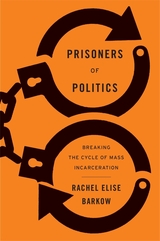 Prisoners of Politics: Breaking the Cycle of Mass Incarceration
Rachel Elise Barkow
Harvard University Press, 2019 A CounterPunch Best Book of the Year
A Lone Star Policy Institute Recommended Book
“If you care, as I do, about disrupting the perverse politics of criminal justice, there is no better place to start than Prisoners of Politics.”
—James Forman, Jr., author of Locking Up Our Own
The United States has the highest rate of incarceration in the world. The social consequences of this fact—recycling people who commit crimes through an overwhelmed system and creating a growing class of permanently criminalized citizens—are devastating. A leading criminal justice reformer who has successfully rewritten sentencing guidelines, Rachel Barkow argues that we would be safer, and have fewer people in prison, if we relied more on expertise and evidence and worried less about being “tough on crime.” A groundbreaking work that is transforming our national conversation on crime and punishment, Prisoners of Politics shows how problematic it is to base criminal justice policy on the whims of the electorate and argues for an overdue shift that could upend our prison problem and make America a more equitable society.
“A critically important exploration of the political dynamics that have made us one of the most punitive societies in human history. A must-read by one of our most thoughtful scholars of crime and punishment.”
—Bryan Stevenson, author of Just Mercy
“Barkow’s analysis suggests that it is not enough to slash police budgets if we want to ensure lasting reform. We also need to find ways to insulate the process from political winds.”
—David Cole, New York Review of Books
“A cogent and provocative argument about how to achieve true institutional reform and fix our broken system.”
—Emily Bazelon, author of Charged
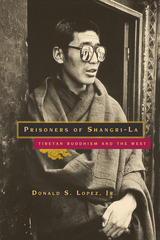 Prisoners of Shangri-La: Tibetan Buddhism and the West
Donald S. Lopez Jr.
University of Chicago Press, 1998 Prisoners of Shangri-La is a provocative analysis of the romance of Tibet, a romance that, even as it is invoked by Tibetan lamas living in exile, ultimately imprisons those who seek the goal of Tibetan independence from Chinese occupation.
"Lopez lifts the veil on America's romantic vision of Tibet to reveal a country and a spiritual history more complex and less ideal than popular perceptions allow. . . . Lively and engaging, Lopez's book raises important questions about how Eastern religions are often co-opted, assimilated and misunderstood by Western culture."—Publishers Weekly
"Proceeding with care and precision, Lopez reveals the extent to which scholars have behaved like intellectual colonialists. . . . Someone had to burst the bubble of pop Tibetology, and few could have done it as resoundingly as Lopez."—Booklist
"Fascinating. . . [A] provocative exploration. Lopez conveys the full dizziness of the Western encounter with Tibet and Tibetan Buddhism."—Fred Pheil, Tricycle: The Buddhist Review
"A timely and courageous exploration. . . . [Lopez's] book will sharpen the terms of the debate over what the Tibetans and their observers can or should be doing about the place and the idea of Tibet. And that alone is what will give us all back our Shambhala."—Jonathan Spence, Lingua Franca Book Review
"Lopez's most important theme is that we should be wary of the idea . . . that Tibet has what the West lacks, that if we were only to look there we would find the answers to our problems. Lopez's book shows that, on the contrary, when the West has looked at Tibet, all that it has seen is a distorted reflection of itself."—Ben Jackson, Times Higher Education Supplement
 Prisoners of Shangri-La: Tibetan Buddhism and the West
Donald S. Lopez, Jr.
University of Chicago Press, 2018 To the Western imagination, Tibet evokes exoticism, mysticism, and wonder: a fabled land removed from the grinding onslaught of modernity, spiritually endowed with all that the West has lost. Originally published in 1998, Prisoners of Shangri-La provided the first cultural history of the strange encounter between Tibetan Buddhism and the West. Donald Lopez reveals here fanciful misconceptions of Tibetan life and religion. He examines, among much else, the politics of the term “Lamaism,” a pejorative synonym for Tibetan Buddhism; the various theosophical, psychedelic, and New Age purposes served by the so-called Tibetan Book of the Dead; and the unexpected history of the most famous of all Tibetan mantras, om mani padme hum. More than pop-culture anomalies, these versions of Tibet are often embedded in scholarly sources, constituting an odd union of the popular and the academic, of fancy and fact.
Upon its original publication, Prisoners of Shangri-La sent shockwaves through the field of Tibetan studies—hailed as a timely, provocative, and courageous critique. Twenty years hence, the situation in Tibet has only grown more troubled and complex—with the unrest of 2008, the demolition of the dwellings of thousands of monks and nuns at Larung Gar in 2016, and the scores of self-immolations committed by Tibetans to protest the Dalai Lama’s exile.
In his new preface to this anniversary edition, Lopez returns to the metaphors of prison and paradise to illuminate the state of Tibetan Buddhism—both in exile and in Tibet—as monks and nuns still seek to find a way home. Prisoners of Shangri-La remains a timely and vital inquiry into Western fantasies of Tibet.
 Prisoners of the Bashaw: The Nineteen-Month Captivity of American Sailors in Tripoli, 1803–1805
Frederick C. Leiner
Westholme Publishing, 2025 FINALIST FOR THE GILDER LEHRMAN MILITARY HISTORY PRIZE
America’s first crisis with the Islamic world: the diplomatic and military mission to free more than three hundred enslaved sailors
On October 31, 1803, the frigate USS Philadelphia ran aground on a reef a few miles outside the harbor of Tripoli. Since April 1801, the United States had been at war with Tripoli, one of the Barbary “pirate” regimes, over the payment of annual tribute—bribes so that American merchant ships would not be seized and their crews held hostage. After hours under fire, the Philadelphia, aground and defenseless, surrendered, and 307 American sailors and marines were captured. Manhandled and stripped of their clothes and personal belongings, the men of the Philadelphia were paraded before the Bashaw of Tripoli, Yusuf Karamanali. The bashaw ordered the crew moved into an old warehouse, and the officers were eventually moved to a dungeon beneath the Bashaw’s castle. While the officers were treated as “gentlemen,” although imprisoned, the sailors worked as enslaved laborers. Regularly beaten and given a meager diet, several died in captivity; escape attempts failed, while a few ended up converting to Islam and joined their captors. President Thomas Jefferson, Congress, U.S. diplomats, and Commodore Edward Preble, commander of the naval squadron off Tripoli, grappled with how to safely free the American captives. The crew of the Philadelphia remained prisoners for nineteen months, until the Tripolitan War ended in June 1805.
The Philadelphia captives became the key to negotiations to end the war; the possibility existed that if threatened too much, the Bashaw would kill the captives. Ultimately, the United States paid $60,000 to get them back—about $200 per man—a sum less than the Bashaw’s initial demands for compensation. In June 1805, the Americans began their journey home. Combining stirring naval warfare, intricate diplomatic negotiations, the saga of surviving imprisonment, and based on extensive primary source research, Prisoners of the Bashaw: The Nineteen-Month Captivity of American Sailors in Tripoli, 1803-1805 by Frederick C. Leiner tells the complete story of America’s first great hostage crisis.
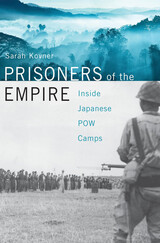 Prisoners of the Empire: Inside Japanese POW Camps
Sarah Kovner
Harvard University Press, 2020 A pathbreaking account of World War II POW camps, challenging the longstanding belief that the Japanese Empire systematically mistreated Allied prisoners.
In only five months, from the attack on Pearl Harbor in December 1941 to the fall of Corregidor in May 1942, the Japanese Empire took prisoner more than 140,000 Allied servicemen and 130,000 civilians from a dozen different countries. From Manchuria to Java, Burma to New Guinea, the Japanese army hastily set up over seven hundred camps to imprison these unfortunates. In the chaos, 40 percent of American POWs did not survive. More Australians died in captivity than were killed in combat.
Sarah Kovner offers the first portrait of detention in the Pacific theater that explains why so many suffered. She follows Allied servicemen in Singapore and the Philippines transported to Japan on “hellships” and singled out for hard labor, but also describes the experience of guards and camp commanders, who were completely unprepared for the task. Much of the worst treatment resulted from a lack of planning, poor training, and bureaucratic incoherence rather than an established policy of debasing and tormenting prisoners. The struggle of POWs tended to be greatest where Tokyo exercised the least control, and many were killed by Allied bombs and torpedoes rather than deliberate mistreatment.
By going beyond the horrific accounts of captivity to actually explain why inmates were neglected and abused, Prisoners of the Empire contributes to ongoing debates over POW treatment across myriad war zones, even to the present day.
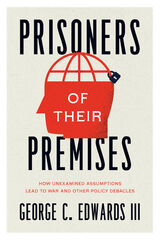 Prisoners of Their Premises: How Unexamined Assumptions Lead to War and Other Policy Debacles
George C. Edwards III
University of Chicago Press, 2022 A timely look at the real costs of leaders not examining their assumptions.
Why do accomplished and stable leaders frequently make calamitous decisions with devastating consequences for their countries—and other nations? We debate debacles such as the American involvement in Vietnam, seeking to understand why leaders pursued disastrous policies. In Prisoners of Their Premises, George C. Edwards III argues that the failure of leaders to examine their premises—the assumptions they make about the world and situation they are dealing with—cause them to ignore real problems or pursue policies that, in costly ways, deal with problems that are different than they think or simply don’t exist. Edwards looks at the role of premises in identifying (or ignoring) a problem in a series of case studies that range from strategic decisions in World War I and the Korean War to the wars in Vietnam and Iraq. Too often, unexamined premises color initial decisions to pursue a policy and shape the strategies leaders employ to achieve their goals, with grave consequences for their countries, organizations, and potentially the world. Timely and important, Prisoners of Their Premises demonstrates the real costs leaders incur by failing to question their assumptions.
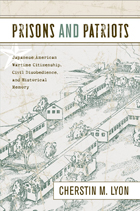 Prisons and Patriots: Japanese American Wartime Citizenship, Civil Disobedience, and Historical Memory
Cherstin Lyon
Temple University Press, 2011 Prisons and Patriots provides a detailed account of forty-one Nisei (second-generation Japanese Americans), known as the Tucsonians, who were imprisoned for resisting the draft during WWII. Cherstin Lyon parallels their courage as resisters with that of civil rights hero Gordon Hirabayashi, well known for his legal battle against curfew and internment, who also resisted the draft. These dual stories highlight the intrinsic relationship between the rights and the obligations of citizenship, particularly salient in times of war. Lyon considers how wartime civil disobedience has been remembered through history—how soldiers have been celebrated for their valor while resisters have been demonized as unpatriotic. Using archival research and interviews, she presents a complex picture of loyalty and conflict among first-generation Issei and Nisei. Lyon contends that the success of the redress movement has made room for a narrative that neither reduces the wartime confinement to a source of shame nor proffers an uncritical account of heroic individuals.
 Prisons of Poverty
Loïc Wacquant
University of Minnesota Press, 2009 An international best seller dissects the globalization of penal policies “made in U.S.A.” as part of the spread of neoliberalism In the early 1990s, Mayor Rudolph Giuliani launched a zero-tolerance campaign aimed at street disorders and petty offenders, incarnated in the infamous “squeegee man.” New York City soon became a planetary showcase for an aggressive approach to law enforcement that, despite its extravagant costs and the absence of connection to the crime drop, came to be admired and imitated by other cities in the United States, Western Europe, and Latin America. In Prisons of Poverty, Loïc Wacquant tracks the incubation and internationalization of the slogans, theories, and measures composing this new punitive “common sense,” fashioned to curb mounting urban inequality and marginality in the metropolis. He finds that a network of Reagan-era conservative think tanks (led by the Manhattan Institute) forged them as weapons in their crusade to dismantle the welfare state and, in effect, to criminalize poverty. He traces their import and export through the agency of the media and the pro-market policy institutes that have mushroomed across the European Union, particularly in Tony Blair’s Britain. And he shows how academics helped smuggle U.S. techniques of penalization into their countries by dressing them up in scholarly garb.Now available in English for the first time in an expanded edition, Prisons of Poverty reveals how the Washington consensus on economic deregulation and welfare retrenchment was extended to encompass punitive crime control because the invisible hand of the market necessitates and calls forth the iron fist of the penal state.
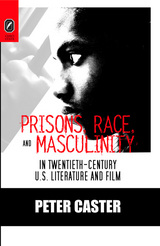 Prisons, Race, and Masculinity in Twentieth-Century U.S. Literature and Film
Peter Caster
Ohio State University Press, 2008 In Prisons, Race, and Masculinity, Peter Caster demonstrates the centrality of imprisonment in American culture, illustrating how incarceration, an institution inseparable from race, has shaped and continues to shape U.S. history and literature in the starkest expression of what W. E. B. DuBois famously termed “the problem of the color line.” A prison official in 1888 declared that it was the freeing of slaves that actually created prisons: “we had to establish means for their control. Hence came the penitentiary.” Such rampant racism co ntributed to the criminalization of black masculinity in the cultural imagination, shaping not only the identity of prisoners (collectively and individually) but also America’s national character. Caster analyzes the representations of imprisonment in books, films, and performances, alternating between history and fiction to describe how racism influenced imprisonment during the decline of lynching in the 1930s, the political radicalism in the late 1960s, and the unprecedented prison expansion through the 1980s and 1990s. Offering new interpretations of familiar works by William Faulkner, Eldridge Cleaver, and Norman Mailer, Caster also engages recent films such as American History X, The Hurricane, and The Farm: Life Inside Angola Prison alongside prison history chronicled in the transcripts of the American Correctional Association. This book offers a compelling account of how imprisonment has functioned as racial containment, a matter critical to U.S. history and literary study.
Privacy and Confidentiality Perspectives: Archivists and Archival Records
Menzi Behrnd-Klodt
Society of American Archivists, 2005 A diverse selection of thoughtful and provocative essays that explore the legal, ethical, administrative, and institutional considerations that shape archival debates concerning the administration of access to records containing personal information.
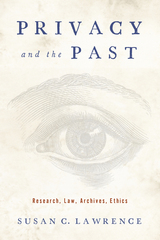 Privacy and the Past: Research, Law, Archives, Ethics
Lawrence, Susan C
Rutgers University Press, 2016 When the new HIPAA privacy rules regarding the release of health information took effect, medical historians suddenly faced a raft of new ethical and legal challenges—even in cases where their subjects had died years, or even a century, earlier. In Privacy and the Past, medical historian Susan C. Lawrence explores the impact of these new privacy rules, offering insight into what historians should do when they research, write about, and name real people in their work. Lawrence offers a wide-ranging and informative discussion of the many issues involved. She highlights the key points in research ethics that can affect historians, including their ethical obligations to their research subjects, both living and dead, and she reviews the range of federal laws that protect various kinds of information. The book discusses how the courts have dealt with privacy in contexts relevant to historians, including a case in which a historian was actually sued for a privacy violation. Lawrence also questions who gets to decide what is revealed and what is kept hidden in decades-old records, and she examines the privacy issues that archivists consider when acquiring records and allowing researchers to use them. She looks at how demands to maintain individual privacy both protect and erase the identities of people whose stories make up the historical record, discussing decisions that historians have made to conceal identities that they believed needed to be protected. Finally, she encourages historians to vigorously resist any expansion of regulatory language that extends privacy protections to the dead. Engagingly written and powerfully argued, Privacy and the Past is an important first step in preventing privacy regulations from affecting the historical record and the ways that historians write history.
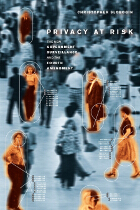 Privacy at Risk: The New Government Surveillance and the Fourth Amendment
Christopher Slobogin
University of Chicago Press, 2007 Without our consent and often without our knowledge, the government can constantly monitor many of our daily activities, using closed circuit TV, global positioning systems, and a wide array of other sophisticated technologies. With just a few keystrokes, records containing our financial information, phone and e-mail logs, and sometimes even our medical histories can be readily accessed by law enforcement officials. As Christopher Slobogin explains in Privacy at Risk, these intrusive acts of surveillance are subject to very little regulation.
Applying the Fourth Amendment’s prohibition on unreasonable searches and seizures, Slobogin argues that courts should prod legislatures into enacting more meaningful protection against government overreaching. In setting forth a comprehensive framework meant to preserve rights guaranteed by the Constitution without compromising the government’s ability to investigate criminal acts, Slobogin offers a balanced regulatory regime that should intrigue everyone concerned about privacy rights in the digital age.
Privacy by Design for the Internet of Things: Building accountability and security
Andrew Crabtree
The Institution of Engineering and Technology, 2021 Privacy by design is a proactive approach that promotes privacy and data protection compliance throughout project lifecycles when storing or accessing personal data. Privacy by design is essential for the Internet of Things (IoT) as privacy concerns and accountability are being raised in an increasingly connected world. What becomes of data generated, collected or processed by the IoT is clearly an important question for all involved in the development, manufacturing, applications and use of related technologies. But this IoT concept does not work well with the 'big data' trend of aggregating pools of data for new applications. Developers need to address privacy and security issues and legislative requirements at the design stage, and not as an afterthought.
 Privacy: Concealing the Eighteenth-Century Self
Patricia Meyer Spacks
University of Chicago Press, 2003 Today we consider privacy a right to be protected. But in eighteenth-century England, privacy was seen as a problem, even a threat. Women reading alone and people hiding their true thoughts from one another in conversation generated fears of uncontrollable fantasies and profound anxieties about insincerity.
In Privacy, Patricia Meyer Spacks explores eighteenth-century concerns about privacy and the strategies people developed to avoid public scrutiny and social pressure. She examines, for instance, the way people hid behind common rules of etiquette to mask their innermost feelings and how, in fact, people were taught to employ such devices. She considers the erotic overtones that privacy aroused in its suppression of deeper desires. And perhaps most important, she explores the idea of privacy as a societal threat—one that bred pretense and hypocrisy in its practitioners. Through inspired readings of novels by Defoe, Richardson, Fielding, and Sterne, along with a penetrating glimpse into diaries, autobiographies, poems, and works of pornography written during the period, Spacks ultimately shows how writers charted the imaginative possibilities of privacy and its social repercussions.
Finely nuanced and elegantly conceived, Spacks's new work will fascinate anyone who has relished concealment or mourned its recent demise.
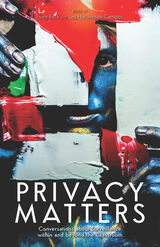 Privacy Matters: Conversations about Surveillance within and beyond the Classroom
Estee Beck
Utah State University Press, 2020 Privacy Matters examines how communications and writing educators, administrators, technological resource coordinators, and scholars can address the ways surveillance and privacy affect student and faculty composing, configure identity formation, and subvert the surveillance state.
This collection offers practical analyses of surveillance and privacy as they occur within classrooms and communities. Organized by themes—surveillance and classrooms, surveillance and bodies, surveillance and culture—Privacy Matters provides writing, rhetoric, and communication scholars and teachers with specific approaches, methods, inquiries, and examinations into the impact tracking and monitoring has upon people’s habits, bodies, and lived experiences.
While each chapter contributes a new perspective in the discipline and beyond, Privacy Matters affirms that these analyses remain inconclusive. This collection is a call for scholars, researchers, activists, and educators within rhetoric and composition to continue the scholarly conversation because privacy matters to all of us.
Contributors: Christina Cedillo, Jenae Cohn, Dànielle Nicole DeVoss, Dustin Edwards, Norah Fahim, Ann Hill Duin, Gavin P. Johnson, John Peterson, Santos Ramos, Colleen A. Reilly, Jennifer Roth Miller, Jason Tham, Stephanie Vie
 Privacy’s Blueprint: The Battle to Control the Design of New Technologies
Woodrow Hartzog
Harvard University Press, 2018 Every day, Internet users interact with technologies designed to undermine their privacy. Social media apps, surveillance technologies, and the Internet of Things are all built in ways that make it hard to guard personal information. And the law says this is okay because it is up to users to protect themselves—even when the odds are deliberately stacked against them.
In Privacy’s Blueprint, Woodrow Hartzog pushes back against this state of affairs, arguing that the law should require software and hardware makers to respect privacy in the design of their products. Current legal doctrine treats technology as though it were value-neutral: only the user decides whether it functions for good or ill. But this is not so. As Hartzog explains, popular digital tools are designed to expose people and manipulate users into disclosing personal information.
Against the often self-serving optimism of Silicon Valley and the inertia of tech evangelism, Hartzog contends that privacy gains will come from better rules for products, not users. The current model of regulating use fosters exploitation. Privacy’s Blueprint aims to correct this by developing the theoretical underpinnings of a new kind of privacy law responsive to the way people actually perceive and use digital technologies. The law can demand encryption. It can prohibit malicious interfaces that deceive users and leave them vulnerable. It can require safeguards against abuses of biometric surveillance. It can, in short, make the technology itself worthy of our trust.
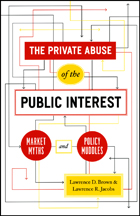 The Private Abuse of the Public Interest: Market Myths and Policy Muddles
Lawrence D. Brown and Lawrence R. Jacobs
University of Chicago Press, 2008 Despite George W. Bush’s professed opposition to big government, federal spending has increased under his watch more quickly than it did during the Clinton administration, and demands on government have continued to grow. Why? Lawrence Brown and Lawrence Jacobs show that conservative efforts to expand markets and shrink government often have the ironic effect of expanding government’s reach by creating problems that force legislators to enact new rules and regulations. Dismantling the flawed reasoning behind these attempts to cast markets and public power in opposing roles, The Private Abuse of the Public Interest urges citizens and policy makers to recognize that properly functioning markets presuppose the government’s ability to create, sustain, and repair them over time.
The authors support their pragmatic approach with evidence drawn from in-depth analyses of education, transportation, and health care policies. In each policy area, initiatives such as school choice, deregulation of airlines and other carriers, and the promotion of managed care have introduced or enlarged the role of market forces with the aim of eliminating bureaucratic inefficiency. But in each case, the authors show, reality proved to be much more complex than market models predicted. This complexity has resulted in a political cycle—strikingly consistent across policy spheres—that culminates in public interventions to sustain markets while protecting citizens from their undesirable effects. Situating these case studies in the context of more than two hundred years of debate about the role of markets in society, Brown and Jacobs call for a renewed focus on public-private partnerships that recognize and respect each sector’s vital—and fundamentally complementary—role.
 Private Acts, Social Consequences
Bayer, Ronald
Rutgers University Press, 1991 From Publishers Weekly
Bayer, staff member of a policy studies center in New York State, here reviews the record of public agencies in dealing with AIDS-created biological, social and political problems, including resolution of conflicts between privacy and the public good. He notes the contradiction between Centers for Disease Control recommendations of counseling, education and broad-scale voluntary testing of all Americans at risk, and federal policies that favor mandatory testing of the military, marriage applicants, hospital workers, patients and prostitutes, among others, and quarantine of AIDS carriers advocated by some states. Bayer recommends restraint by individuals in sexual matters and drug use, accompanied by an assault on the economic and social problems that underlie the epidemic, especially as regards the newborn and teenagers. In the growing body of AIDS literature, this is a valuable fact-finding study that should interest a lay as well as professional audience.
From Library Journal
Bayer's topic is the politically charged dilemma AIDS presents to public health officials and policymakers. What steps can be taken which will not only protect society at large, but also safeguard the privacy and civil liberties of individuals? The author ably traces the political history of AIDS. He suggests a responsible but nonauthoritarian approach, combining education; health care access for IV users; promotion of anonymous, confidential screening; defense of victims' rights; appropriate contact notification programs; and moderate laws protecting society from malicious individuals. This work is well-documented and cogently argued. Highly recommended for all academic collections and larger public libraries.
Private Aid, Political Activism: American Medical Relief to Spain and China, 1936–1949
Aelwen D. Wetherby
University of Missouri Press, 2017 This book explores American medical relief to Spain and China in the 1930s and 1940s as responses to the Spanish Civil War and the Second Sino-Japanese War. Although serving vastly different peoples in strikingly distant landscapes, the three aid organizations focused on here illustrate a transition in how Americans responded to foreign conflict and how humanitarian aid was used as a political tool. The story of these small and relatively unknown organizations can help refine historical understanding of the development of humanitarianism and the evolution of global citizenship in the twentieth century.
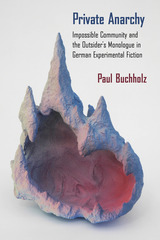 Private Anarchy: Impossible Community and the Outsider’s Monologue in German Experimental Fiction
Paul Buchholz
Northwestern University Press, 2018 European social theorists of the late nineteenth and early twentieth centuries tended to define modernity as a condition of heightened alienation in which traditional community is replaced by a regime of self‑interested individualism and collective isolation. In Private Anarchy, Paul Buchholz develops an alternative intellectual history of the nineteenth and twentieth centuries, showing how a strain of German-language literature worked against this common conception of modernity.
Buchholz suggests that in their experimental prose Gustav Landauer, Franz Kafka, Thomas Bernhard, and Wolfgang Hilbig each considered how the "void" of mass society could be the precondition for a new, anarchic form of community that would rest not on any assumptions of shared origins or organic unity but on an experience of extreme emptiness that blurs the boundaries of the self and enables intimacy between total strangers. This community, Buchholz argues, is created through the verbal form most closely associated with alienation and isolation: the monologue.
By showing how these authors engaged with the idea of community and by relating these contributions to an extended intellectual genealogy of nihilism, Private Anarchy illustrates the distinct philosophical and sociopolitical stakes of German experimental writing in the twentieth century.
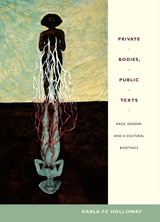 Private Bodies, Public Texts: Race, Gender, and a Cultural Bioethics
Karla FC Holloway
Duke University Press, 2011 In Private Bodies, Public Texts, Karla FC Holloway examines instances where medical issues and information that would usually be seen as intimate, private matters are forced into the public sphere. As she demonstrates, the resulting social dramas often play out on the bodies of women and African Americans. Holloway discusses the spectacle of the Terri Schiavo right-to-die case and the injustice of medical researchers’ use of Henrietta Lacks’s cell line without her or her family’s knowledge or permission. She offers a provocative reading of the Tuskegee syphilis study and a haunting account of the ethical dilemmas that confronted physicians, patients, and families when a hospital became a space for dying rather than healing during Hurricane Katrina; even at that dire moment, race mattered. Private Bodies, Public Texts is a compelling call for a cultural bioethics that attends to the historical and social factors that render some populations more vulnerable than others in medical and legal contexts. Holloway proposes literature as a conceptual anchor for discussions of race, gender, bioethics, and the right to privacy. Literary narratives can accommodate thick description, multiple subjectivities, contradiction, and complexity.
 Private Choices and Public Health: The AIDS Epidemic in an Economic Perspective
Tomas Philipson and Richard A. Posner
Harvard University Press, 1993 Like other dangerous but pleasurable activities, such as downhill skiing and mountain climbing, engaging in unprotected sex implicitly involves the weighing of costs and benefits. Recognizing that the transmission of the AIDS virus is a consequence of private choices—rational and often informed—to engage in risky conduct, the authors employ tools of economic analysis to reassess the orthodox approach to AIDS by the public health community.
Standard predictions of the spread of AIDS, the authors argue, are questionable because they ignore rational behavioral response to the risk of infection. For the same reason, customary recommended public health measures, such as extensive testing for the AIDS virus, not only may be ineffective in controlling the spread of the disease but may actually cause it to spread more rapidly. The authors examine regulatory measures and proposals such as mandatory testing, criminal punishments, and immigration controls, as well as the subsidization of AIDS education and medical research, the social and fiscal costs of AIDS, the political economy of the government's response, and the interrelation of AIDS and fertility risk.
Neither liberal nor conservative, yet on the whole skeptical about governmental involvement in the epidemic, this book is certain to be controversial, but its injection of hard-headed economic thinking into the AIDS debate is long overdue. Although Private Choices and Public Health is accessible to the interested general reader, it will also capture the attention of economists—especially those involved in health issues—epidemiologists, public health workers, lawyers, and specialists in sexual behavior and drug addiction.
Private Correspondences
Trudy Lewis
Northwestern University Press, 1996 Libby is a politician's daughter maturing amidst barely sublimated violence, sexuality, and corruption. Her tangled emotions about her father and the roil of sexual and social politics surrounding her are brought into relief when she receives a shocking anonymous letter. Horrified but fascinated, Libby works to discover the identity and the motivation of the sender while struggling to interpret the layers of deceit and manipulation enveloping her.
 The Private Diplomacy of Shibusawa Eiichi: Visionary Entrepreneur and Transnationalist of Modern Japan
Shibusawa Masahide
Amsterdam University Press, 2018 “This book offers an account of the life of Shibusawa Eiichi, who may be considered the first ‘internationalist’ in modern Japan, written by his great grandson Masahide and published in 1970 under the title, Taiheiyo ni kakeru hashi (Building Bridges Over the Pacific). Japan had a tortuous relationship with internationalism between 1840, when Shibusawa was born, and 1931, the year the nation invaded Manchuria and when he passed away. The key to understanding Shibusawa’s thoughts against the background of this history, the author shows, lies in the concept of ‘people’s diplomacy,’ namely an approach to international relations through non-governmental connections. Such connections entail more transnational than international relations. In that sense, Shibusawa was more a transnationalist than an internationalist thinker. Internationalism presupposes the prior existence of sovereign states among which they cooperate to establish a peaceful order. The best examples are the League of Nations and the United Nations. Transnationalism, in contrast, goes beyond the framework of sovereign nations and promotes connections among individuals and non-governmental organizations. It could be called “globalism” in the sense that transnationalism aims at building bridges across the globe apart from independent nation-states. In that sense Shibusawa was a pioneering globalist. It was only in the 1990s that expressions like globalism and globalization came to be widely used. This was more than sixty years after Shibusawa Eiichi’s death, which suggests how pioneering his thoughts were.” [Akira Iriye]
Private Domain: An Autobiography
Paul Taylor
University of Pittsburgh Press, 1999
Taylor explores aspects of himself that have affected his work. He delves into the creation of Aureole and From Sea to Shining Sea, from their initial inception to the ways in which specific dancers influenced the choreography, including such notables as Pina Bausch, Laura Dean, David Parsons, Twyla Tharp, Dan Wagoner, Senta Driver—all of whom went on to form their own companies—and others—Bettie de Jong, Nicholas Gunn, and Carolyn Adams—who remained as much a part of the Taylor style as the choreography itself. Taylor writes with sincerity, wit, and charm of his associations with Martha Graham, Merce Cunningham, Jerome Robbins, Anthony Tudor, George Balanchine, and many others.
 Private Equity at Work: When Wall Street Manages Main Street
Eileen Appelbaum
Russell Sage Foundation, 2014 Private equity firms have long been at the center of public debates on the impact of the financial sector on Main Street companies. Are these firms financial innovators that save failing businesses or financial predators that bankrupt otherwise healthy companies and destroy jobs? The first comprehensive examination of this topic, Private Equity at Work provides a detailed yet accessible guide to this controversial business model. Economist Eileen Appelbaum and Professor Rosemary Batt carefully evaluate the evidence—including original case studies and interviews, legal documents, bankruptcy proceedings, media coverage, and existing academic scholarship—to demonstrate the effects of private equity on American businesses and workers. They document that while private equity firms have had positive effects on the operations and growth of small and mid-sized companies and in turning around failing companies, the interventions of private equity more often than not lead to significant negative consequences for many businesses and workers. Prior research on private equity has focused almost exclusively on the financial performance of private equity funds and the returns to their investors. Private Equity at Work provides a new roadmap to the largely hidden internal operations of these firms, showing how their business strategies disproportionately benefit the partners in private equity firms at the expense of other stakeholders and taxpayers. In the 1980s, leveraged buyouts by private equity firms saw high returns and were widely considered the solution to corporate wastefulness and mismanagement. And since 2000, nearly 11,500 companies—representing almost 8 million employees—have been purchased by private equity firms. As their role in the economy has increased, they have come under fire from labor unions and community advocates who argue that the proliferation of leveraged buyouts destroys jobs, causes wages to stagnate, saddles otherwise healthy companies with debt, and leads to subsidies from taxpayers. Appelbaum and Batt show that private equity firms’ financial strategies are designed to extract maximum value from the companies they buy and sell, often to the detriment of those companies and their employees and suppliers. Their risky decisions include buying companies and extracting dividends by loading them with high levels of debt and selling assets. These actions often lead to financial distress and a disproportionate focus on cost-cutting, outsourcing, and wage and benefit losses for workers, especially if they are unionized. Because the law views private equity firms as investors rather than employers, private equity owners are not held accountable for their actions in ways that public corporations are. And their actions are not transparent because private equity owned companies are not regulated by the Securities and Exchange Commission. Thus, any debts or costs of bankruptcy incurred fall on businesses owned by private equity and their workers, not the private equity firms that govern them. For employees this often means loss of jobs, health and pension benefits, and retirement income. Appelbaum and Batt conclude with a set of policy recommendations intended to curb the negative effects of private equity while preserving its constructive role in the economy. These include policies to improve transparency and accountability, as well as changes that would reduce the excessive use of financial engineering strategies by firms. A groundbreaking analysis of a hotly contested business model, Private Equity at Work provides an unprecedented analysis of the little-understood inner workings of private equity and of the effects of leveraged buyouts on American companies and workers. This important new work will be a valuable resource for scholars, policymakers, and the informed public alike.
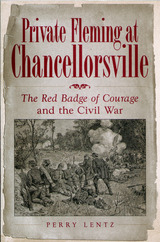 Private Fleming at Chancellorsville: The Red Badge of Courage and the Civil War
Perry Lentz
University of Missouri Press, 2006 Famous for its insight into a young, inexperienced soldier’s psychology, Stephen Crane’s The Red Badge of Courage has long been assumed to have been based on little more than magazine articles and veterans’ reminiscences. It also has been subject to various misreadings, including ones unduly influenced by fictional responses to the wars of the twentieth century. Perry Lentz now draws on more than three decades of teaching the novel and his own experience as a historical novelist to plumb the historical realities that actually shaped Crane’s work and to confront these misreadings. Taking a new look at a classic work that many may feel they already know, Lentz shows how this apparently impressionistic novel is actually a faithful reflection of Civil War combat based on thorough knowledge about combat in general and the battle of Chancellorsville in particular. Anchoring the novel’s action firmly in the Civil War, Lentz challenges the long-standing assumption that Crane did little research for the novel, arguing that he made extensive use of contemporary sources to fashion an accurate depiction of Chancellorsville. Rich with information about infantry combat in the Civil War, from uniforms and weaponry to formations and battlefield tactics, Lentz’s study invites readers to follow the exploits of Private Henry Fleming of the 304th New York Volunteer Infantry Regiment as he and his fellow soldiers participate in this legendary battle. Lentz shows how Crane evokes a set of traditional responses from his reader and how close reading expands those responses. He examines Private Fleming’s adventures behind the lines of battle in terms of the historical situations in which they are set, then explains how Crane repeatedly entices readers into imposing their initial expectations and final evaluations upon the experiences of this particular soldier. Lentz also investigates why the novel’s portrayal of its hero’s experiences on the second day of battle is sometimes ignored and always undervalued. By focusing on events both as they actually unfolded at Chancellorsville and as Crane depicted Fleming and his comrades experiencing them, he shows how these soldiers judge themselves, how others judge them, and how a reader can achieve a more sophisticated understanding of these judgments. Lentz’s work reclaims a place for this novel in the American canon and enhances our understanding of Crane, of a legendary battle, and of war literature in general.
 Private Guns, Public Health
David Hemenway
University of Michigan Press, 2004 "In this small book David Hemenway has produced a masterwork. He has dissected the various aspects of the gun violence epidemic in the United States into its component parts and considered them separately. He has produced a scientifically based analysis of the data and indeed the microdata of the over 30,000 deaths and 75,000 injuries which occur each year. Consideration and adoption of the policy lessons he recommends would strengthen the Constitutional protections that all of our citizens have to life, liberty, and the pursuit of happiness."
-Richard F. Corlin, Past President, American Medical Association
"This lucid and penetrating study is essential reading for anyone who wishes to understand the tragedy of gun violence in America and-even more important-what we can do to stop it. David Hemenway cuts through the cant and rhetoric in a way that no fair-minded person can dismiss, and no sane society can afford to ignore."
-Richard North Patterson, novelist
"The rate of gun-related homicide, suicide, and accidental injury has reached epidemic proportions in American society. Diagnosing and treating the gun violence epidemic demands the development of public health solutions in conjunction with legislative and law enforcement strategies."
-Kweisi Mfume, President and CEO of NAACP
"In scholarly, sober analytic assessments, including rigorous critiques of NRA-popularized pseudoscience, David Hemenway constructs a convincing case that firearm availability is a critical and proximal cause of unparalleled carnage. By formulating such violence as a public health issue, he proposes workable policies analogous to ones that reduced injuries from tobacco, alcohol, and automobiles."
-Jerome P. Kassirer, Editor-in-Chief Emeritus, New England Journal of Medicine, and Distinguished Professor, Tufts University School of Medicine
"As a former District Attorney and Attorney General, I know the urgency of providing safe homes, schools and neighborhoods for all. This remarkable tour-de-force is a powerful study of one promising solution: a data-rich, eminently readable demonstration of why we should treat gun violence as an American epidemic."
-Scott Harshbarger, Former Attorney General of Massachusetts, President and CEO of Common Cause
On an average day in the United States, guns are used to kill almost eighty people, and to wound nearly three hundred more. If any other consumer product had this sort of disastrous effect, the public outcry would be deafening; yet when it comes to guns such facts are accepted as a natural consequence of supposedly high American rates of violence.
Private Guns, Public Health explodes that myth and many more, revealing the advantages of treating gun violence as a consumer safety and public health problem. David Hemenway fair-mindedly and authoritatively demonstrates how a public-health approach-which emphasizes prevention over punishment, and which has been so successful in reducing the rates of injury and death from infectious disease, car accidents, and tobacco consumption-can be applied to gun violence.
Hemenway uncovers the complex connections between guns and self-defense, gun violence and schools, gun prevalence and homicide, and more. Finally, he outlines a policy course that would significantly reduce gun-related injury and death.
With its bold new public-health approach to guns, Private Guns, Public Health marks a shift in our understanding of guns that will-finally-point us toward a solution.
Private Guns, Public Health, New Ed.
David Hemenway
University of Michigan Press, 2017 On an average day in the United States, guns are used to kill over ninety people and wound about three hundred more; yet such facts are accepted as a natural consequence of supposedly high American rates of violence. Private Guns, Public Health reveals the advantages of treating gun violence as a consumer safety and public health problem—an approach that emphasizes prevention over punishment and that has successfully reduced the rates of injury and death from infectious disease, car accidents, and tobacco consumption.
Hemenway fair-mindedly and authoritatively outlines a policy course that would significantly reduce gun-related injury and death, pointing us toward a solution.
 The Private Journals of Edvard Munch: We Are Flames Which Pour Out of the Earth
Edvard Munch, edited and translated by J. Gill Holland
University of Wisconsin Press, 2005 Scandinavia's most famous painter, the Norwegian Edvard Munch (1863-1944), is probably best known for his painting The Scream, a universally recognized icon of terror and despair. (A version was stolen from the Munch Museum in Oslo, Norway, in August 2004, and has not yet been recovered.) But Munch considered himself a writer as well as a painter. Munch began painting as a teenager and, in his young adulthood, studied and worked in Paris and Berlin, where he evolved a highly personal style in paintings and works on paper. And in diaries that he kept for decades, he also experimented with reminiscence, fiction, prose portraits, philosophical speculations, and surrealism. Known as an artist who captured both the ecstasies and the hellish depths of the human condition, Munch conveys these emotions in his diaries but also reveals other facets of his personality in remarks and stories that are alternately droll, compassionate, romantic, and cerebral.
This English translation of Edvard Munch's private diaries, the most extensive edition to appear in any language, captures the eloquent lyricism of the original Norwegian text. The journal entries in this volume span the period from the 1880s, when Munch was in his twenties, until the 1930s, reflecting the changes in his life and his work. The book is illustrated with fifteen of Munch's drawings, many of them rarely seen before. While these diaries have been excerpted before, no translation has captured the real passion and poetry of Munch's voice. This is a translation that lets Munch speak for himself and evokes the primal passion of his diaries. J. Gill Holland's exceptional work adds a whole new level to our understanding of the artist and the depth of his scream.
 Private Life, Public Action: How Housing Politics Mobilized Citizens in Moscow
Anna Zhelnina
Temple University Press, 2026 Renovation, an urban renewal plan in Moscow that was announced in the spring of 2017, proposed to demolish thousands of socialist-era apartment buildings. In a country where it is rare under an authoritarian government, residents supported or opposed the redevelopment by mobilizing and organizing into local alliances. They were often shocked by their neighbors who were excited about the new housing or those suspicious of being displaced.
Private Life, Public Action traces how residents impacted by the relocation plan became activists despite having little to no experience organizing or even forming political affiliations and opinions. Author Anna Zhelnina details the ways in which neighbors engaged in collective action, as well as the individual and structural changes these interactions caused.
Zhelnina develops the concept of “housing strategies” to explain how residents’ debates with their neighbors about housing were shaped by their private life strategies. She applies her findings about housing in Moscow to ongoing questions about political mobilization, demonstrating how public engagement is shaped by historical and social contexts.
Examining the intersection of housing, politics, and citizenship in contemporary Russia, Private Life, Public Action offers a new way to look at urban change.
In the series Politics, History, and Social Change
 Private Lives: Families, Individuals, and the Law
Lawrence M. Friedman
Harvard University Press, 2004 What is a family? Grandparents, mom, dad, and kids around a Thanksgiving turkey? An egg mother, a womb mother, a sperm donor, and their mutual child? Two gay men caring for their adopted son? In this provocative essay, a leading American legal historian argues that laws about family are increasingly laws about individuals and their right to make their own, sometimes contentious, choices.
Drawing on many revealing and sometimes colorful court cases of the past two centuries, Private Lives offers a lively short history of the complexities of family law and family life--including the tensions between the laws on the books and contemporary arrangements for marriage, divorce, adoption, and child rearing. Informal common-law marriage was once widely accepted as a means to regularize property arrangements, but it declined as the state asserted its authority to dictate who could marry and reproduce. In the twentieth century, state attempts to control private life were swept away, most famously in the creation of "no-fault" divorce, a system in which laws that made divorce nearly unattainable were circumvented.
Private life, the author argues, as a legitimate sphere, was once basically confined to life in nuclear families; but the modern law of "privacy" extends the accepted zone of intimate relations. The omnipresence of the media and our fascination with celebrity test the boundaries of public and private life. Meanwhile, laws about cohabitation and civil unions, among others, suggest that family and commitment, in their many forms, remain powerful ideals.
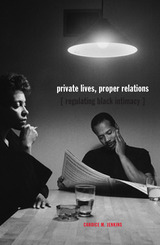 Private Lives, Proper Relations: Regulating Black Intimacy
Candice M. Jenkins
University of Minnesota Press, 2007 Private Lives, Proper Relations begins with the question of why contemporary African American literature—particularly that produced by black women—is continually concerned with issues of respectability and propriety. Candice M. Jenkins argues that this preoccupation has its origins in recurrent ideologies about African American sexuality, and that it expresses a fundamental aspect of the racial self—an often unarticulated link between the intimate and the political in black culture. In a counterpoint to her paradigmatic reading of Nella Larsen’s Passing, Jenkins’s analysis of black women’s narratives—including Ann Petry’s The Street, Toni Morrison’s Sula and Paradise, Alice Walker’s The Color Purple, and Gayl Jones’s Eva’s Man—offers a theory of black subjectivity. Here Jenkins describes middle-class attempts to rescue the black community from accusations of sexual and domestic deviance by embracing bourgeois respectability, and asserts that behind those efforts there is the “doubled vulnerability” of the black intimate subject. Rather than reflecting a DuBoisian tension between race and nation, to Jenkins this vulnerability signifies for the African American an opposition between two poles of potential exposure: racial scrutiny and the proximity of human intimacy. Scholars of African American culture acknowledge that intimacy and sexuality are taboo subjects among African Americans precisely because black intimate character has been pathologized. Private Lives, Proper Relations is a powerful contribution to the crucial effort to end the distortion still surrounding black intimacy in the United States. Candice M. Jenkins is associate professor of English at Hunter College, City University o
 Private Lives/Public Consequences: Personality and Politics in Modern America
William H. Chafe
Harvard University Press, 2005 A political leader's decisions can determine the fate of a nation, but what determines how and why that leader makes certain choices? William H. Chafe, a distinguished historian of twentieth century America, examines eight of the most significant political leaders of the modern era in order to explore the relationship between their personal patterns of behavior and their political decision-making process. The result is a fascinating look at how personal lives and political fortunes have intersected to shape America over the past fifty years.
One might expect our leaders to be healthy, wealthy, genteel, and happy. In fact, most of these individuals--from Franklin Delano Roosevelt to Martin Luther King, Jr., from John F. Kennedy to Bill Clinton--came from dysfunctional families, including three children of alcoholics; half grew up in poor or only marginally secure homes; most experienced discord in their marriages; and at least two displayed signs of mental instability. What links this extraordinarily diverse group is an intense ambition to succeed, and the drive to overcome adversity. Indeed, adversity offered a vehicle to develop the personal attributes that would define their careers and shape the way they exercised power.
Chafe probes the influences that forged these men's lives, and profiles the distinctive personalities that molded their exercise of power in times of danger and strife. The history of the United States from the Depression into the new century cannot be understood without exploring the dynamic and critical relationship between personal history and political leadership that these eight life stories so poignantly reveal.
Private Markets and Public Intervention: A Primer for Policy Designers
Harvey Averch
University of Pittsburgh Press, 1991
Averch describes and analyzes common strategies for solving problems in public policy. The strategies discussed include the use of markets, bureaus, regulation, planning and budgeting, benefit-cost, systems analysis, and evaluation. He examines the historical development of each strategy; describes how each strategy would ideally work; explains the necessary or sufficient conditions that permit each strategy to work; lists the potential failures of each strategy; and provides a judgment or appraisal of each strategy.
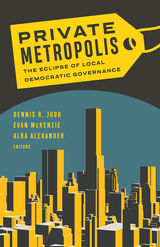 Private Metropolis: The Eclipse of Local Democratic Governance
Dennis R. Judd
University of Minnesota Press, 2021 Examines the complex ecology of quasi-public and privatized institutions that mobilize and administer many of the political, administrative, and fiscal resources of today’s metropolitan regions In recent decades metropolitan regions in the United States have witnessed the rise of multitudes of “shadow governments” that often supersede or replace functions traditionally associated with municipalities and other local governments inherited from the urban past. Shadow governments take many forms, ranging from billion-dollar special authorities that span entire urban regions, to public–private partnerships and special districts created to accomplish particular tasks, to privatized gated communities, to neighborhood organizations empowered to receive private and public funds. They finance and administer public services ranging from the prosaic (garbage collection and water utilities) to the transformative (economic development and infrastructure). Private Metropolis demonstrates that this complex ecosystem of local governance has compromised and even eclipsed democratic processes by moving important policy decisions out of public sight. The quasi-public institutions of urban governance generally escape the budgetary and statutory restraints imposed on traditional local governments and protect policy decisions from the limitations and vagaries of electoral politics. Moving major policy decisions into a privatized and corporatized realm facilitates efficiency and speed, but at the cost of democratic oversight. Increasingly, the urban electorate is left debating symbolic issues only tangentially connected to the actual distribution of the resources that affect people’s lives. The essays in Private Metropolis grapple with the difficult and timely questions that arise from this new ecology of governance: What are the consequences of the proliferation of special authorities, privatized governments, and public–private arrangements? Is the trade-off between democratic accountability and efficiency worth it? Has the public sector, with its messiness and inefficiencies—but also its checks and balances—ceded too much power to these new institutions? By examining such questions, this book provokes a long-overdue debate about the future of urban governance. Contributors: Douglas Cantor, California State U, Long Beach; Ellen Dannin, Pennsylvania State U; Jameson W. Doig, Princeton U; Mary Donoghue; Peter Eisinger, New School; Steven P. Erie, U of California, San Diego; Rebecca Hendrick, U of Illinois at Chicago; Sara Hinkley, U of California, Berkeley; Amanda Kass, U of Illinois at Chicago; Scott A. MacKenzie, U of California, Davis; David C. Perry, U of Illinois at Chicago; James M. Smith, U of Indiana South Bend; Shu Wang, Michigan State U; Rachel Weber, U of Illinois at Chicago.
 Private Myths: Dreams and Dreaming
Anthony Stevens
Harvard University Press, 1995 Every night we enter a mythic realm, a dark, primordial world of fear and desire. What this world offers, Anthony Stevens suggests, may well be the key to understanding our waking mysteries--ourselves, our society, and our history. A prominent psychiatrist and practicing Jungian analyst, Stevens views dreaming from both psychological and neurological perspectives to show how dreams owe their origins as much to our evolutionary history as a species as to our personal history as individuals.
A work rich in symbolic and scientific insight, Private Myths traverses the course of dream interpretation from distant hunter-gatherer times to the present. This analysis is as authoritative as it is wide-ranging, including discussions of the biology of dreaming and the discovery of REM sleep, elaboration of the latest neuroscientific techniques in sleep research, and an assessment of the century-long legacy of analytic practice to dream interpretation. In a close look at the actual processes of dream formation, Stevens relates "dream work" to other creative capacities such as language, poetry, storytelling, memory, play, symptom-formation, magic, and ritual. He draws on his many years of experience to analyze key historical dreams, such as Freud's dream of Irma's injection and Hitler's dream of being buried alive, and enriches this discussion with analyses of his own and his patients' dreams.
Remarkable in its breadth, Private Myths makes the principles of dream interpretation accessible to scientists, the findings of dream science accessible to analysts, and the discoveries of both available to anyone intrigued by the mysteries of dreams and dreaming.
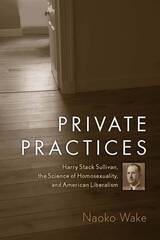 Private Practices: Harry Stack Sullivan, the Science of Homosexuality, and American Liberalism
Wake, Naoko
Rutgers University Press, 2011 Private Practices examines the relationship between science, sexuality, gender, race, and culture in the making of modern America between 1920 and 1950, when contradictions among liberal intellectuals affected the rise of U.S. conservatism. Naoko Wake focuses on neo-Freudian, gay psychiatrist Harry Stack Sullivan, founder of the interpersonal theory of mental illness. She explores medical and social scientists' conflicted approach to homosexuality, particularly the views of scientists who themselves lived closeted lives. Wake discovers that there was a gap--often dramatic, frequently subtle--between these scientists' "public" understanding of homosexuality (as a "disease") and their personal, private perception (which questioned such a stigmatizing view). This breach revealed a modern culture in which self-awareness and open-mindedness became traits of "mature" gender and sexual identities. Scientists considered individuals of society lacking these traits to be "immature," creating an unequal relationship between practitioners and their subjects. In assessing how these dynamics--the disparity between public and private views of homosexuality and the uneven relationship between scientists and their subjects--worked to shape each other, Private Practices highlights the limits of the scientific approach to subjectivity and illuminates its strange career--sexual subjectivity in particular--in modern U.S. culture.
 Private Property and the Endangered Species Act: Saving Habitats, Protecting Homes
Edited by Jason F. Shogren
University of Texas Press, 1998 Our whole nation benefits from the preservation of natural habitats and their diversity of animal and plant species—yet small groups of private landowners often bear most of the costs of setting land aside for conservation purposes. This imbalance has generated many conflicts since the passage of the Endangered Species Act in 1973 and remains one of the most controversial issues to be resolved as the ESA makes its way through Congress for reauthorization. To provide policy makers, landowners, and other stakeholders in the ESA debates with impartial baseline information, this book offers multidisciplinary perspectives on the role that private property plays in protecting endangered species in the United States. The opening chapter traces the evolution of the ESA and set forth the parameters of the debate over regulation of private property. Four subsequent chapters explore the judicial and economic implications of ESA and suggest how issues of scale and diversity affect the implementation of the ESA on private property. The volume concludes with eight principles to help frame the ongoing ESA reauthorization debate, developed by the University of Wyoming's Institute for Environment and Natural Resources Policy Board, the sponsor of the research presented in this book.
Private Property and the Limits of American Constitutionalism: The Madisonian Framework and Its Legacy
Jennifer Nedelsky
University of Chicago Press, 1990 The United States Constitution was designed to secure the rights of individuals and minorities from the tyranny of the majority—or was it? Jennifer Nedelsky's provocative study places this claim in an utterly new light, tracing its origins to the Framers' preoccupation with the protection of private property. She argues that this formative focus on property has shaped our institutions, our political system, and our very understanding of limited government.
 The Private Record of an Indian Governor-Generalship: The Correspondence of Sir John Shore, Governor-General, with Henry Dundas, President of the Board of Control, 1793-1798
John Shore
Harvard University Press These are the private and secret letters of the Governor-General of British India to the Home Government during that complex and interesting period of European history which intervenes between the outbreak of the French Revolutionary Wars and the departure of Napoleon for Egypt. They tell the story of British relations with native princes, of the all but open mutiny in the Bengal army in 1796, of the revolution in Oudh in 1798, and of British efforts to combat the activities of French naval vessels and privateers in the Indian Seas. Since not much has previously been known about Sir John Shore's administration owing to the lack of original materials, Mr Furber makes a special attempt in his Introduction to place him in his proper setting and to put a just valuation on his work in India.
Private Religious Foundations in the Byzantine Empire
John Philip Thomas
Harvard University Press, 1987 Thomas examines the private ownership of ecclesiastical institutions to determine the nature and extent of private ownership of religious institutions in the Byzantine Empire. This includes churches, monasteries, and philanthropic institutions such as hospitals and orphanages, which were founded by private individuals and retained for personal administration independent of the public authorities of the state and church.
 Private Religious Foundations in the Byzantine Empire
John Philip Thomas
Harvard University Press Throughout its history, private religious foundations were prominent features of the ecclesiastical geography of the Byzantine Empire. Since the hierarchy of the church generally lacked the financial resources necessary for undertaking ambitious building programs, laymen took the initiative in providing churches, monasteries, and philanthropic institutions such as hospitals and orphanages. These foundations were important not only for the religious life of the empire, but also for its social and economic life. Many socially prominent Byzantines sought the fame that came to the builder of such a foundation, and many more owned them as family inheritances. A private religious foundation could serve as the core of a considerable family fortune that was bolstered by tax exemptions and imperial donations of landed property.
In this book, John Philip Thomas examines the nature, extent, and importance of the private ownership of ecclesiastical institutions in the Byzantine Empire. For over a thousand years these foundations were closely bound to the fortunes of the empire and its ruling classes. More durable than either, they survived the fall of the Byzantine state itself.
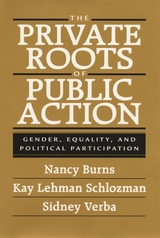 The Private Roots of Public Action: Gender, Equality, and Political Participation
Nancy Burns, Kay Lehman Schlozman, and Sidney Verba
Harvard University Press, 2001 Why, after several generations of suffrage and a revival of the women's movement in the late 1960s, do women continue to be less politically active than men? Why are they less likely to seek public office or join political organizations? The Private Roots of Public Action is the most comprehensive study of this puzzle of unequal participation.
The authors develop new methods to trace gender differences in political activity to the nonpolitical institutions of everyday life--the family, school, workplace, nonpolitical voluntary association, and church. Different experiences with these institutions produce differences in the resources, skills, and political orientations that facilitate participation--with a cumulative advantage for men. In addition, part of the solution to the puzzle of unequal participation lies in politics itself: where women hold visible public office, women citizens are more politically interested and active. The model that explains gender differences in participation is sufficiently general to apply to participatory disparities among other groups--among the young, the middle-aged, and the elderly or among Latinos, African-Americans and Anglo-Whites.
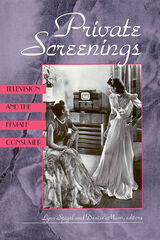 Private Screenings: Television and the Female Consumer
Lynn Spigel
University of Minnesota Press, 1992 Analyzes how television delivers definitions of "femininity" to its female audiences. Includes a source guide for television shows from 1946-1970.
"'This book contains competent studies that will probably be of most interest to students of media, communications and images in popular culture. Non-specialist fans of the shows discussed will also have great fun seconding or contesting the authors' conclusions." Women's Review
"This collection represents the cutting edge of feminist cultural criticism today - a heady mixture of substantive historical studies, innovative reception analyses, and sophisticated textual work. This wide-ranging approach brings a richness and texture to the topics being analyzed and effectively demonstrates the (by now axiomatic) principle of cultural studies as a multilayered project." Contemporary Sociology
Contributors: Julie D'Acci, Sarah Berry, Aniko Bodroghkozy, Robert H. Deming, Dan Einstein, Sandy Flitterman-Lewis, Mary Beth Haralovich, Lynne Joyrich, William Lafferty, Nina Liebman, George Lipsitz, Denise Mann, Lynn Spigel, Jillian Steinberger and Randall Vogt.
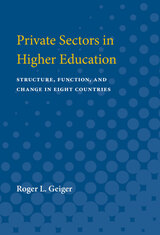 Private Sectors in Higher Education: Structure, Function, and Change in Eight Countries
Roger L. Geiger
University of Michigan Press, 1986 Private Sectors in Higher Education examines how the tasks of higher education have been divided between public and private institutions, and with what consequences. In doing so, the author analyzes both the comparative structures of educational systems and their social relations. Besides correcting the widespread misperception that private higher education is predominately an American phenomenon, this study should enlarge the range of experience that can be brought to bear on issues currently facing public policy and private higher education. It constitutes the first scholarly treatment of private higher education outside the United States. Case studies of private sectors in seven countries—Belgium, France, Great Britain, Japan, the Netherlands, the Philippines, and Sweden—form the core of this work. This material provides a perspective for probing several underlying rationales for private higher education in the United States. And finally, the author analyzes the issue of government financial support for private higher education. This book should significantly contribute to enlarging the framework of discussion of this question by broadening the understanding of the social and political underpinnings of public/private division in higher education.
The Private Self
Arnold Modell
Harvard University Press, 1993 In The Private Self, Arnold Modell contributes an interdisciplinary perspective in formulating a theory of the private self. A leading thinker in American psychoanalysis, Modell here studies selfhood by examining variations on the theme of the self in Freud and in the work of object relations theorists, self psychologists, and neuroscientists. Modell contends that the self is fundamentally paradoxical, in that it is at once dependent upon social affirmation and autonomous in generating itself from within. We create ourselves, he suggests, by selecting values that are endowed with private meanings.
By thinking of the unconscious as a neurophysiological process, and the self as the subject and object of its own experience, Modell is able to explain how identity can persist in the flux of consciousness. He thus offers an exciting and original perspective for our understanding of the mind and the brain.
 Private Soldiers: A Year in Iraq with a Wisconsin National Guard Unit
Benjamin Buchholz
Wisconsin Historical Society Press, 2007 In April 2005 they received the official alert: The Wisconsin Army National Guard's 2-127th Infantry Battalion was being mobilized. After training at Camp Shelby, Mississippi, the 620 soldiers of the Gator Battalion would serve in Operation Iraqi Freedom, providing armed convoy escort and route security throughout all of Iraq, from Umm Qasr in the south to Mosul in the far north. Their mission would take them into the most dangerous regions of Iraq, and during the next year the battalion would withstand hundreds of attacks, see dozens wounded, and lose three members killed in action.
Private Soldiers chronicles the 2-127th's year-long deployment from the unique perspective of the soldiers themselves. Written and photographed by three battalion members, the book provides a rare first-hand account of war and life in Iraq. Fascinating soldier interviews reveal the effects of deployment on the troops and on their families back home, and interviews with Iraqi civilians describe the Iraqis' perceptions of life, war, and working alongside Wisconsin troops. Brilliant photography illuminates the 2-127th's year, from training to "boots on the ground" to their return home. And candid photos taken by battalion members capture the soldiers' day-to-day lives and camaraderie.
An extremely timely and relevant account of soldiers' lives, Private Soldiers honors Wisconsin's participants in the Iraq war and helps readers understand the war's human side.
All royalties from sales of Private Soldiers will go to the 2-127th's family support groups and to funds established in memoriam of the battalion members who gave their lives in the Iraq war.
 Private, the Public, and the Published: Reconciling Private Lives and Public Rhetoric
edited by Barbara Couture & Thomas Kent
Utah State University Press, 2004 At the 2003 "Rock the Vote" debate, one of the questions posed by a student to the eight Democratic candidates for the presidential nomination was "have you ever used marijuana?" Amazingly, all but one of the candidates voluntarily answered the question. Add to this example the multiple ways in which we now see public intrusion into private lives (security cameras, electronic access to personal data, scanning and "wanding" at the airport) or private self-exposure in public forums (cell phones, web cams, confessional talk shows, voyeuristic "reality" TV). That matters so private could be treated as legitimate--in some cases even vital--for public discourse indicates how intertwined the realms of private and public have become in our era. Reverse examples exist as well. Around the world, public authorities look the other way while individual rights are abused--calling it a private matter--or officials appeal to sectarian morés to justify discrimination in public policies. The authors of The Private, the Public, and the Published feel that scholarship needs to explore and understand this phenomenon, and needs to address it in the college classroom. There are consequences of conflating public and private, they argue--consequences that have implications especially for what is known as the public good. The changing distinctions between "private" and "public," and the various practices of private and public expression, are explored in these essays with an eye toward what they teach us about those consequences and implications.
 Private Theatricals: The Lives of the Victorians
Nina Auerbach
Harvard University Press, 1990 "Everyman" as actor on life's stage has been a recurrent theme in popular literature--epecially persuasive in these times of powerful electronic media, celebrity hype, and professional image-makers--but the great Victorians exuded sincerity. Nina Auerbach reminds us that all lives can be subversive performances. Charting the notable impact of the theater and theatricality on the Victorian imagination, she provocatively reexamines the concept of sincerity and authenticity as literary ideal.
In novels, popular fiction, and biographies, Auerbach unveils the theatrical element in lives imagined and represented. Focusing on three major points in the life cycle--childhood, passage to maturity, and death--she demonstrates how the process of living was for Victorians the acting of a role; only dying generated a creature with an "own self." Her discussion draws not only on theater history, but on demonology-the ghosts and monsters so much a part of the nineteenth-century imagination.
Nina Auerbach has written a closely reasoned and stimulating book for everyone interested in the Victorian age, and everyone interested in theatricality---whether private or on the stage.
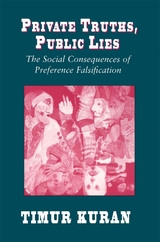 Private Truths, Public Lies: The Social Consequences of Preference Falsification
Timur Kuran
Harvard University Press, 1995 Preference falsification, according to the economist Timur Kuran, is the act of misrepresenting one's wants under perceived social pressures. It happens frequently in everyday life, such as when we tell the host of a dinner party that we are enjoying the food when we actually find it bland. In Private Truths, Public Lies Kuran argues convincingly that the phenomenon not only is ubiquitous but has huge social and political consequences. Drawing on diverse intellectual traditions, including those rooted in economics, psychology, sociology, and political science, Kuran provides a unified theory of how preference falsification shapes collective decisions, orients structural change, sustains social stability, distorts human knowledge, and conceals political possibilities.
A common effect of preference falsification is the preservation of widely disliked structures. Another is the conferment of an aura of stability on structures vulnerable to sudden collapse. When the support of a policy, tradition, or regime is largely contrived, a minor event may activate a bandwagon that generates massive yet unanticipated change.
In distorting public opinion, preference falsification also corrupts public discourse and, hence, human knowledge. So structures held in place by preference falsification may, if the condition lasts long enough, achieve increasingly genuine acceptance. The book demonstrates how human knowledge and social structures co-evolve in complex and imperfectly predictable ways, without any guarantee of social efficiency.
Private Truths, Public Lies uses its theoretical argument to illuminate an array of puzzling social phenomena. They include the unexpected fall of communism, the paucity, until recently, of open opposition to affirmative action in the United States, and the durability of the beliefs that have sustained India's caste system.
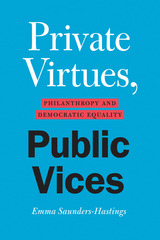 Private Virtues, Public Vices: Philanthropy and Democratic Equality
Emma Saunders-Hastings
University of Chicago Press, 2022 A thought-provoking challenge to our ideas about philanthropy, marking it as a deeply political activity that allows the wealthy to dictate more than we think.
Philanthropy plays a huge role in supporting the provision of many public goods in contemporary societies. As a result, decisions that affect public outcomes and people’s diverse interests are often dependent on the preferences and judgments of the rich. Political theorist Emma Saunders-Hastings argues that philanthropy is a deeply political activity. She asks readers to look at how the power wielded by philanthropy impacts democracy and deepens political inequality by enabling the wealthy to exercise outsize influence in public life and by putting in place paternalistic relationships between donors and their intended beneficiaries. If philanthropy is to be made compatible with a democratic society of equals, it must be judged not simply on the benefits it brings but on its wider political consequences. Timely and thought-provoking, Private Virtues, Public Vices will challenge readers’ thoughts on what philanthropy is and how it truly affects us.
A Private War: An American Code Officer in the Belgian Congo
Robert Laxalt
University of Nevada Press, 1998 In this vivid memoir, Laxalt recalls his service during WWII as a code officer in the Belgian Congo. In this remote jungle outpost, a secret war was being fought for control of the world’s future. Deep in the Congo lay a mine that produced a little-known substance called uranium, and for reasons no one then understood, the Allies and the Germans were struggling ferociously to control this mine and its ore. The cloth edition is a limited numbered, signed edition.
Private Wealth and Public Education
John E. Coons, William H. Clune, III, and Stephen D. Sugarman
Harvard University Press, 1970 This provocative book is a challenge to the economic structure of American public education, which has historically offered better public education to families residing in school districts with higher property values. Lawyers Coons, Clune, and Sugarman analyze and expose the discrimination by wealth inherent in existing state systems of school finance, developing a model for testing the effects of wealth variations. Not satisfied with delineating the problem, the authors propose a solution based upon manipulation of state and local taxes—a hypothetical but workable plan which they have termed "power equalizing." A final section of the volume demonstrates that the intervention of the judiciary is the primary hope for change.
 A Private Wilderness: The Journals of Sigurd F. Olson
Sigurd F. Olson
University of Minnesota Press, 2024 The personal diaries of one of America’s best-loved naturalists, revealing his difficult and inspiring path to finding his voice and becoming a writer Few writers are as renowned for their eloquence about the natural world, its power and fragility, as Sigurd F. Olson (1899–1982). Before he could give expression to The Singing Wilderness, however, he had to find his own voice. It is this struggle, the painstaking and often simply painful process of becoming the writer and conservationist now familiar to us, that Olson documented in the journal entries gathered here. Written mostly during the years from 1930 to 1941, Olson’s journals describe the dreams and frustrations of an aspiring writer honing his skills, pursuing recognition, and facing doubt while following the academic career that allowed him to live and work even as it consumed so much of his time. But even as he speaks with immediacy and intensity about the conditions of his apprenticeship, Olson can be seen developing the singular way of observing and depicting the natural world that would bring him fame—and also, more significantly, alert others to the urgent need to understand and protect that world. Author of Olson’s definitive biography, editor David Backes brings a deep knowledge of the writer to these journals, providing critical context, commentary, and insights along the way. When Olson wrote, in the spring of 1941, “What I am afraid of now is that the world will blow up just as I am getting it organized to suit me,” he could hardly have known how right he would prove to be. It is propitious that at our present moment, when the world seems once more balanced on the precipice, we have the words of Sigurd F. Olson to remind us of what matters—and of the hard work and the wonder that such a reckoning requires.
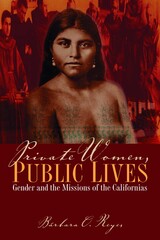 Private Women, Public Lives: Gender and the Missions of the Californias
By Bárbara O. Reyes
University of Texas Press, 2009 Through the lives and works of three women in colonial California, Bárbara O. Reyes examines frontier mission social spaces and their relationship to the creation of gendered colonial relations in the Californias. She explores the function of missions and missionaries in establishing hierarchies of power and in defining gendered spaces and roles, and looks at the ways that women challenged, and attempted to modify, the construction of those hierarchies, roles, and spaces. Reyes studies the criminal inquiry and depositions of Barbara Gandiaga, an Indian woman charged with conspiracy to murder two priests at her mission; the divorce petition of Eulalia Callis, the first lady of colonial California who petitioned for divorce from her adulterous governor-husband; and the testimonio of Eulalia Pérez, the head housekeeper at Mission San Gabriel who acquired a position of significant authority and responsibility but whose work has not been properly recognized. These three women's voices seem to reach across time and place, calling for additional, more complex analysis and questions: Could women have agency in the colonial Californias? Did the social structures or colonial processes in place in the frontier setting of New Spain confine or limit them in particular gendered ways? And, were gender dynamics in colonial California explicitly rigid as a result of the imperatives of the goals of colonization?
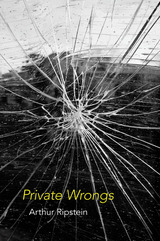 Private Wrongs
Arthur Ripstein
Harvard University Press, 2016 A waiter spills hot coffee on a customer. A person walks on another person’s land. A moored boat damages a dock during a storm. A frustrated neighbor bangs on the wall. A reputation is ruined by a mistaken news report. Although the details vary, the law recognizes all of these as torts, different ways in which one person wrongs another. Tort law can seem puzzling: sometimes people are made to pay damages when they are barely or not at fault, while at other times serious losses go uncompensated. In this pioneering book, Arthur Ripstein brings coherence and unity to the baffling diversity of tort law in an original theory that is philosophically grounded and analytically powerful.
Ripstein shows that all torts violate the basic moral idea that each individual is in charge of his or her own person and property, and never in charge of another individual’s person or property. Battery and trespass involve one person wrongly using another’s body or things, while negligence injures others by imposing risks to them in ways that are inconsistent with their independence. Tort remedies aim to provide a substitute for the right that was violated.
As Private Wrongs makes clear, tort law not only protects our bodies and property but constitutes our entitlement to use them as we see fit, consistent with the entitlement of others to do the same.
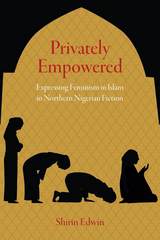 Privately Empowered: Expressing Feminism in Islam in Northern Nigerian Fiction
Shirin Edwin
Northwestern University Press, 2016 Privately Empowered responds to the lack of adequate attention paid to Islam in Africa in comparison to Islam in the Middle East and the Arab world. Shirin Edwin points to the tight embrace between Islam and politics that has rendered Islamic feminist discourse historically and thematically contextualized in regions where Islamic feminism evolves in tandem with the nation-state and is commonly understood in terms of activism, social affiliations, or struggles for legal reform. In Africa itself, Islam bears the burden of being a “foreign” presence that is considered injurious to African Muslim women’s success. Edwin examines the fictional works of the northern Nigerian novelists Zaynab Alkali, Abubakar Gimba, and Hauwa Ali due to the texts’ emphases on personal and private engagement, Islamic ritual and prayer in the quotidian, and observance of Qur’anic injunctions. Analysis of these texts connects the ways in which Muslim women in northern Nigeria balance their spiritual habits in ever changing configurations of their personal and private domains. The spiritual universe of African Muslim women may be one where Islam is not the source of their problems or their legislative and political activity, but a spiritual activity that can exist devoid of activist or political forms.
The Privatisation of Israeli Security
Shir Hever
Pluto Press, 2017 From 1994-2014, Israel’s security service transformed and became one of the most extreme examples of privatized security in the world. The Privatisation of Israeli Security provides a comprehensive overview of this period and the socioeconomic conditions that enabled it. Shir Hever considers the impact of the ongoing crisis of Palestinian resistance to Israeli occupation, the influence of US military aid, and the effect of neoliberalism on state apparatus in order to make sense of this dramatic change in security policy. Through his revealing study, Hever shows how the structural violence of the neoliberal economy is self-perpetuating, providing a fresh perspective on the Israeli occupation for students, activists, and journalists alike.
Privatising Justice: The Security Industry, War and Crime Control
John Lea and Wendy Fitzgibbon
Pluto Press, 2020 Privatising Justice takes a broad historical view of the role of the private sector in the British state, from private policing and mercenaries in the eighteenth century to the modern rise of the private security industry in armed conflict, policing and the penal system.
The development of the welfare state is seen as central to the decline of what the authors call 'old privatisation'. Its succession by neoliberalism has created the ground for the resurgence of the private sector. The growth of private military, policing and penal systems is located within the broader global changes brought about by neoliberalism and the dystopian future that it portends.
The book is a powerful petition for the reversal of the increasing privatization of the state and the neoliberalism that underlies it.
Privatization and Political Change in Mexico
Judith A. Teichman
University of Pittsburgh Press, 1996 Since 1983, Mexico has undergone a rapid and thorough economic restructuring program, with privatization at the core. The government has divested itself of hundreds of public companies, increasing the role of private capital, both domestic and foreign. Supporters have argued that divestiture would have positive implications for Mexican democracy, but Judith A. Teichman concludes that political and economic power in Mexico is more concentrated and exclusionary than ever. She uses extensive field research, including interviews with top political and business leaders to describe and analyze the process by which the Mexican state has reformed its mammoth public enterprise sector.
 Privatization in Eastern Europe: Is the State Withering Away?
Roman Frydman
Central European University Press, 1994 In Eastern Europe privatization is now a mass phenomenon. The authors propose a model of it by means of an illustration from the example of Poland, which envisages the free provision of shares in formerly public undertakings to employees and consumers, and the provision of corporate finance from foreign intermediaries. One danger that emerges is that of bureaucratization. On the broader canvas, mass privatization implies the reform of the whole system, the creation of a suitable economic infrastructure for a market economy and the institutions of corporate governance. The authors point out the need for a delicate balance between evolution - which may be too slow - and design - which brings the risk of more government involvement than it is able to manage. A chapter originating as a European Bank working paper explores the banking implications of setting up a totally new financial sector with interlocking classes of assets. The economic effects merge into politics as the role of the state is investigated. Teachers and graduate students of public/private sector economies, East European affairs; advisers to bankers or commercial companies with Eastern European interests.
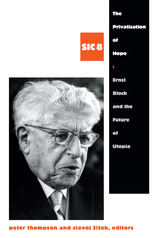 The Privatization of Hope: Ernst Bloch and the Future of Utopia, SIC 8
Peter Thompson and Slavoj Žižek, eds.
Duke University Press, 2013 The concept of hope is central to the work of the German philosopher Ernst Bloch (1885–1977), especially in his magnum opus, The Principle of Hope (1959). The "speculative materialism" that he first developed in the 1930s asserts a commitment to humanity's potential that continued through his later work. In The Privatization of Hope, leading thinkers in utopian studies explore the insights that Bloch's ideas provide in understanding the present. Mired in the excesses and disaffections of contemporary capitalist society, hope in the Blochian sense has become atomized, desocialized, and privatized. From myriad perspectives, the contributors clearly delineate the renewed value of Bloch's theories in this age of hopelessness. Bringing Bloch's "ontology of Not Yet Being" into conversation with twenty-first-century concerns, this collection is intended to help revive and revitalize philosophy's commitment to the generative force of hope.
Contributors. Roland Boer, Frances Daly, Henk de Berg, Vincent Geoghegan, Wayne Hudson, Ruth Levitas, David Miller, Catherine Moir, Caitríona Ní Dhúill, Welf Schröter, Johan Siebers, Peter Thompson, Francesca Vidal, Rainer Ernst Zimmermann, Slavoj Žižek
 The Privatization of Policing: Two Views
Brian Forst and Peter K. Manning
Georgetown University Press, 1999 The increasing reliance on private security services raises questions about the effects of privatization on the quality of public police forces, particularly in high-crime, low-income areas. In an effective pro-and-con format, two experts on policing offer two strikingly different perspectives on this trend towards privatization. In the process, they provide an unusually thoughtful discussion of the origins of both the public police and the private security sectors, the forces behind the recent growth of private security operations, and the risks to public safety posed by privatization. In his critique of privatization, Peter K. Manning focuses on issues of free market theory and management practices such as Total Quality Management that he believes are harmful to the traditional police mandate to control crime. He questions the appropriateness of strategies that emphasize service to consumers. For Brian Forst, the free market paradigm and economic incentives do not carry the same stigma. He argues that neither public nor private policing should have a monopoly on law enforcement activities, and he predicts an even more varied mix of public and private police activities than are currently available. Following the two main sections of the book, each author assesses the other's contribution, reflecting on not just their points of departure but also on the areas in which they agree. The breadth and depth of the discussion makes this book essential for both scholars and practitioners interested in policing generally and privatization in particular.
The Privatization Process in Central Europe
Roman Frydman
Central European University Press, 1993 In this work, comprehensive comparative information on five Central European countries has been collected by teams of researchers from both within the region and from the West. Following an introduction to the economic environment in each country, it provides an overview of the privatization process, including an account of the legal framework of ownership, institutions for state regulation, an overview of privatization programmes and the initial transformation of enterprises. A key feature of the book is the authors' access to hitherto unavailable information and their ability to present a vast amount of material in an easily available format. Aimed at policy makers and business people, the work should provide a strong foundation for future research.
The Privatization Process in Russia, the Ukraine, and the Baltic States
Roman Frydman
Central European University Press, 1993 In this work, comprehensive comparative information on five former Soviet republics has been collected by teams of researchers from both within the region and from the West. Following an introduction to the economic environment in each country, it provides an overview of the privatization process, including an account of the legal framework of ownership, institutions for state regulation, an overview of privatization programmes and the initial transformation of enterprises. A key feature of the book is the authors' access to hitherto unavailable information and their ability to present a vast amount of material in an easily available format. Aimed at policy makers and business people, the work should provide a strong foundation for future research.
 Privatizing Health Services in Africa
Turshen, Meredeth
Rutgers University Press, 1998 Privatizing Health Services in Africa analyzes the disappearance of public health in the form of state services in Africa, and the growth of a private market in health care that will serve primarily an urban elite. Meredeth Turshen considers the implications of introducing private insurance in countries with growing unemployment, a shrinking formal job sector, and a lack of social security programs or other safety nets. She debates the pros and cons of shifting the delivery of health services to the nongovernmental sector in the context of new concepts of the role of the state. Many of the schemes to privatize the purchase and sale of pharmaceuticals reverse decades of United Nations work challenging the power of the multinational drug industry. Turshen weighs these policy changes in light of the World Bank’s eclipse of the World Health Organization as the premier UN health policy agency. Until now, no book has disputed the World Bank’s plans to privatize health care in Africa. This is the first book-length analysis of policy changes in light of monetarism and globalization. Throughout the book, Turshen examines the implications of privatization for gender equity. She also provides a case study of Zimbabwe and comparative material from Malawi, Mozambique, and Zambia. Her study makes a contribution to current debates on the impact of structural adjustment policies on health and the design of health services in the Third World.
Privatizing Social Security
Edited by Martin Feldstein
University of Chicago Press, 1998 This volume represents the most important work to date on one of the pressing policy issues of the moment: the privatization of social security. Although social security is facing enormous fiscal pressure in the face of an aging population, there has been relatively little published on the fundamentals of essential reform through privatization. Privatizing Social Security fills this void by studying the methods and problems involved in shifting from the current system to one based on mandatory saving in individual accounts.
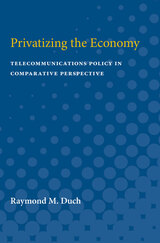 Privatizing the Economy: Telecommunications Policy in Comparative Perspective
Raymond M. Duch
University of Michigan Press, 1991 During the 1980s government economic policies in the United States and many Western countries promoted the privatization of state-owned activities and the liberalization of competition. This has been the Reagan-Thatcher legacy to contemporary political economy. Privatizing the Economy takes a careful second look at the economic arguments that link government ownership with poor economic performance. Through a rigorous comparative analysis of telecommunications policies in France, Germany, and the United Kingdom, Raymond Duch shows that it is political control rather than economic ownership that accounts for variations in economic performance. He also provides a political explanation of why privatization has progressed further in some countries than others. Privatizing the Economy strikes a unique balance between economic and political theory, empirical and theoretical analysis, and cross-national and case-study research design. Having identified the weaknesses of economic arguments regarding public versus private ownership, the author proposes an alternative political explanation for the variations in the performance of public and private firms. The author seeks to explain why some governments have adopted liberal economic policies while others have not. The discussion draws upon an extensive political economy literature, pointing out weaknesses of existing theories and suggesting a novel way of looking at policy change. Evidence supporting the author's theoretical propositions comes from two distinct comparative research traditions: cross-national and case-study analyses. This novel way of looking at policy change and the author's broad use of political economy literature offers readers an understanding of what benefits liberal economic policies might deliver and of the likelihood that such policy initiatives might succeed.
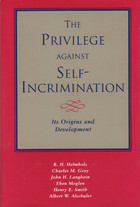 The Privilege against Self-Incrimination: Its Origins and Development
R. H. Helmholz, Charles M. Gray, John H. Langbein, Eben Moglen, Henry E. Smith,
University of Chicago Press, 1997 Challenging the accounts of John Henry Wigmore and Leonard W. Levy, this history of the privilege against self-incrimination demonstrates that what has sometimes been taken to be an unchanging tenet of our legal system has actually encompassed many different legal consequences in a history that reaches back to the Middle Ages.
Each chapter of this definitive study uncovers what the privilege meant in practice. The authors trace the privilege from its origins in the medieval period to its first appearance in English common law, and from its translation to the American colonies to its development into an effective protection for criminal defendants in the nineteenth century. The authors show that the modern privilege—the right to remain silent—is far from being a basic civil liberty. Rather, it has evolved through halting and controversial steps. The book also questions how well an expansive notion of the privilege accords with commonly accepted principles of morality.
This book constitutes a major revision of our understanding of an important aspect of both criminal and constitutional law.
 Privilege and Prejudice: The Life of a Black Pioneer
Clifton R. Wharton
Michigan State University Press, 2015 Privilege and Prejudice is a stereotype-defying autobiography. It reveals a Black man whose good fortune in birth and heritage and opportunity of time and place helped him to forge breakthroughs in four separate careers. Clifton R. Wharton Jr. entered Harvard at age 16. The first Black student accepted to the School of Advanced International Studies at Johns Hopkins, he went on to receive a doctorate in economics from the University of Chicago—another first. For twenty-two years he promoted agricultural development in Latin America and Southeast Asia, earning a post as chairman of the Rockefeller Foundation. He again pioneered higher education firsts as president of Michigan State University and chancellor of the sixty-four-campus State University of New York system. As chairman and CEO of TIAA-CREF, he was the first Black CEO of a Fortune 500 company. His commitment to excellence culminated in his appointment as deputy secretary of state during the Clinton administration. A remarkable story of persistence and courage, Privilege and Prejudice also documents the challenges of competing in a society where obstacles, negative expectations, and stereotypical thinking remained stubbornly in place. An absorbing and candid narrative, it describes a most unusual childhood, a remarkable family, and a historic career.
 The Privilege of Being Banal: Art, Secularism, and Catholicism in Paris
Elayne Oliphant
University of Chicago Press, 2021 France, officially, is a secular nation. Yet Catholicism is undeniably a monumental presence, defining the temporal and spatial rhythms of Paris. At the same time, it often fades into the background as nothing more than “heritage.” In a creative inversion, Elayne Oliphant asks in The Privilege of Being Banal what, exactly, is hiding in plain sight? Could the banality of Catholicism actually be a kind of hidden power?
Exploring the violent histories and alternate trajectories effaced through this banal backgrounding of a crucial aspect of French history and culture, this richly textured ethnography lays bare the profound nostalgia that undergirds Catholicism’s circulation in nonreligious sites such as museums, corporate spaces, and political debates. Oliphant’s aim is to unravel the contradictions of religion and secularism and, in the process, show how aesthetics and politics come together in contemporary France to foster the kind of banality that Hannah Arendt warned against: the incapacity to take on another person’s experience of the world. A creative meditation on the power of the taken-for-granted, The Privilege of Being Banal is a landmark study of religion, aesthetics, and public space.
The Privilege of Crisis: Narratives of Masculinities in Colonial and Postcolonial Literature, Photography, and Film
Elahe Haschemi Yekani
Campus Verlag, 2011 Despite the understanding of scholars that masculinity, far from being a natural or stable concept, is in reality a social construction, the culture at large continues to privilege an idealized, coherent male point of view. The Privilege of Crisis draws on the work of authors such as H. Rider Haggard, Rudyard Kipling, and Joseph Conrad—as well as contemporary postcolonial writers such as J. M. Coetzee, Hanif Kureishi and Zadie Smith—to show how recurrent references to a "crisis" of masculinity or the decline of masculinity serve largely to demonstrate and support positions of male privilege.
A Privilege of Intellect: Conscience and Wisdom in Newman’s Narrative
D. A. Drennen
University of Scranton Press, 2010 Based on decades of research, A Privilege of Intellect is D. A. Drennen’s portrait of the English cardinal John Henry Newman (1801–90), whose conversion to the Roman Catholic Church in 1845 significantly boosted the presence of the Catholic Church in England and caused many Anglicans to follow his example. Newman—who will be beatified this fall—devoted his life both to the Church and to the university, demonstrating that religious faith and intellectual pursuits could exist in harmony. Drennen’s biography combines theology with psychology and philosophy and will appeal to anyone interested in the history of the Church of England and the Roman Catholic Church.
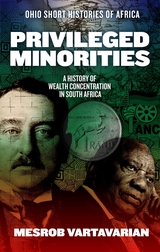 Privileged Minorities: A History of Wealth Concentration in South Africa
Mesrob Vartavarian
Ohio University Press Explores how anticolonial movements in South Africa enabled enduring inequality through the rise of privileged minorities and exclusive economic advantages In Privileged Minorities, Mesrob Vartavarian examines a central paradox in South African history: how a nation shaped by anticolonial struggle became fertile ground for wealth concentration and enduring inequality. While these contradictions are not unique to South Africa, its historical trajectory offers broader insights into persistent disparities across African societies. Vartavarian argues that the rise of privileged minorities—small, exclusive groups that dominate political and economic life—paralleled the development of successful anticolonial movements. These minorities secured exclusive advantages, defined as benefits and protections that enabled material accumulation. Such advantages included land seizures, racialized labor systems, access to coercive institutions, favorable regulatory environments, and targeted state expenditures. Though these mechanisms could foster overall economic growth, they disproportionately benefited select oligarchies and middle classes. The book traces how distinct sociocultural groups in South Africa navigated and negotiated these advantages from the Dutch colonial era through the rise and decline of African National Congress rule. Rather than dismantling minority privilege, challenges from marginalized groups often served to reshape entrenched advantages by incorporating new actors into existing structures. These dynamics produced composite systems of accumulation that sustained inequality. Through this historical lens, Privileged Minorities offers a compelling framework for understanding how structural advantage persists and evolves, even in the wake of liberation.
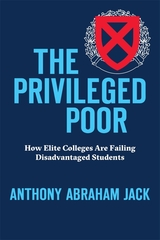 The Privileged Poor: How Elite Colleges Are Failing Disadvantaged Students
Anthony Abraham Jack
Harvard University Press, 2019 An NPR Favorite Book of the Year
“Breaks new ground on social and educational questions of great import.”
—Washington Post
“An essential work, humane and candid, that challenges and expands our understanding of the lives of contemporary college students.”
—Paul Tough, author of Helping Children Succeed
“Eye-opening…Brings home the pain and reality of on-campus poverty and puts the blame squarely on elite institutions.”
—Washington Post
“Jack’s investigation redirects attention from the matter of access to the matter of inclusion…His book challenges universities to support the diversity they indulge in advertising.”
—New Yorker
The Ivy League looks different than it used to. College presidents and deans of admission have opened their doors—and their coffers—to support a more diverse student body. But is it enough just to admit these students? In this bracing exposé, Anthony Jack shows that many students’ struggles continue long after they’ve settled in their dorms. Admission, they quickly learn, is not the same as acceptance. This powerfully argued book documents how university policies and campus culture can exacerbate preexisting inequalities and reveals why some students are harder hit than others.
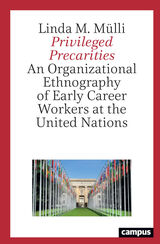 Privileged Precarities: An Organizational Ethnography of Early Career Workers at the United Nations
Linda M. Mülli
Campus Verlag, 2021 An ethnography on early-career workers facing job insecurity at the United Nations.
This ethnography focuses on the work and lifeworld at the United Nations in Geneva and Vienna. By emphasizing the perspectives of entry-level workers, this book addresses the increasing flexibility and job insecurity for those at the beginning of their potential UN careers. It explores questions such as: How do career aspirants reconcile their narratives with the organization’s image built over the past decades? How can we understand institutional power and individual agency through the lens of ritual theory and the theory of social orders? This study finally examines the entangled discourses around privilege and prestige on the one hand and the precarity and vulnerability of a growing number of UN workers on the other hand. It shows that these phenomena are not contractionary but two sides of the coin. Using the UN as an example, the study considers mechanisms of flexible and unstable work environments in times of cognitive and affective capitalism.
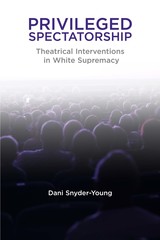 Privileged Spectatorship: Theatrical Interventions in White Supremacy
Dani Snyder-Young
Northwestern University Press, 2021 Many professional theater artists attempt to use live performances in formal theater spaces to disrupt racism and create a more equitable society. Privileged Spectatorship: Theatrical Interventions in White Supremacy examines the impact of such projects, looking at how and why they do and do not intervene in white supremacy. In this incisive study, Dani Snyder-Young examines audience responses to a range of theatrical events that focus on race‑related conflict or racial identity in the contemporary United States. The audiences for these performances, produced at mainstream not‑for‑profit professional theaters in major American cities in 2013–18, reflect dominant patterns of theater attendance: the majority of spectators are older, affluent, white, and describe themselves as politically progressive. Snyder-Young studies the ways these audience members consume the stories of racialized others and analyzes how different artistic, organizational, and programmatic strategies can (or cannot) mitigate white privilege. This book is essential reading for scholars and students of theater, performance studies, and critical ethnic studies and for theater practitioners interested in equity and inclusion.
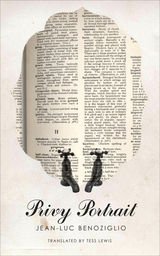 Privy Portrait
Jean-Luc Benoziglio
Seagull Books, 2014 The narrator in Jean-Luc Benoziglio’s Privy Portrait has fallen on hard times. His wife and young daughter have abandoned him, he has no work or prospects, he’s blind in one eye, and he must move into a horribly tiny apartment with his only possession: a twenty-five-volume encyclopedia. His neighbors, the Shritzkys, are vulgar, narrow-minded, and racist. And because he has no space for his encyclopedia in his cramped room, he stores it in the communal bathroom, and this becomes a major point of contention with his neighbors. The bathroom is also the only place he can find refuge from the Shritzkys’ blaring television, and he barricades himself in it to read his encyclopedia, much to the chagrin of the rest of the residents of the building.
Darkly amusing, Privy Portrait is the monologue of a man, disoriented by the gaping void of not knowing his own nationality, recounting the final remnants of his own sanity and his life. In this buffoonish, even grotesque, yet deeply pitiful man, Benoziglio explores, with a light yet profound touch, weighty themes such as the roles of family, history, one’s moral responsibility towards others, and the fragility of personal identity.
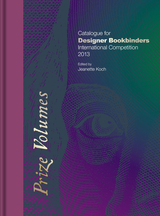 Prize Volumes: Catalogue for Designer Bookbinders International Competition 2013
Edited by Jeanette Koch
Bodleian Library Publishing, 2013 Designer Bookbinders is one of the foremost bookbinding societies and its International Bookbinding Competition in association with Mark Getty and the Bodleian Library continues to attract top binders from around the world. For 2013, the theme of the competition was Shakespeare and entries reflect a remarkable range of styles, materials, and approaches to the dramatic and poetic works of the Great Bard.
Prize Volumes collects the full 250 entries from the 2013 competition, highlighting the twenty-eight winning bindings and offering a veritable showcase for the creativity and craftsmanship of the international bookbinding community. As beautifully designed as many of the bindings it displays, this showcase of the best in modern bookbinding will become a collector’s item among aficionados of bookbinding—as well as a handsome addition to any personal library.
 Pro Archia. Post Reditum in Senatu. Post Reditum ad Quirites. De Domo Sua. De Haruspicum Responsis. Pro Plancio
Cicero
Harvard University Press Defense of a poet, and five speeches from after exile.
Cicero (Marcus Tullius, 106–43 BC), Roman lawyer, orator, politician, and philosopher, of whom we know more than of any other Roman, lived through the stirring era that saw the rise, dictatorship, and death of Julius Caesar in a tottering republic. In his political speeches especially and in his correspondence we see the excitement, tension and intrigue of politics and the part he played in the turmoil of the time. Of about 106 speeches, delivered before the Roman people or the Senate if they were political, before jurors if judicial, fifty-eight survive (a few of them incompletely). In the fourteenth century Petrarch and other Italian humanists discovered manuscripts containing more than 900 letters of which more than 800 were written by Cicero and nearly 100 by others to him. These afford a revelation of the man all the more striking because most were not written for publication. Six rhetorical works survive and another in fragments. Philosophical works include seven extant major compositions and a number of others; and some lost. There is also poetry, some original, some as translations from the Greek.
The Loeb Classical Library edition of Cicero is in twenty-nine volumes.
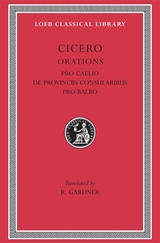 Pro Caelio. De Provinciis Consularibus. Pro Balbo
Cicero
Harvard University Press Three postconsular speeches.
Cicero (Marcus Tullius, 106–43 BC), Roman lawyer, orator, politician, and philosopher, of whom we know more than of any other Roman, lived through the stirring era that saw the rise, dictatorship, and death of Julius Caesar in a tottering republic. In his political speeches especially and in his correspondence we see the excitement, tension and intrigue of politics and the part he played in the turmoil of the time. Of about 106 speeches, delivered before the Roman people or the Senate if they were political, before jurors if judicial, fifty-eight survive (a few of them incompletely). In the fourteenth century Petrarch and other Italian humanists discovered manuscripts containing more than 900 letters of which more than 800 were written by Cicero and nearly 100 by others to him. These afford a revelation of the man all the more striking because most were not written for publication. Six rhetorical works survive and another in fragments. Philosophical works include seven extant major compositions and a number of others; and some lost. There is also poetry, some original, some as translations from the Greek.
The Loeb Classical Library edition of Cicero is in twenty-nine volumes.
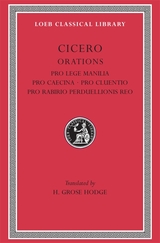 Pro Lege Manilia. Pro Caecina. Pro Cluentio. Pro Rabirio Perduellionis Reo
Cicero
Harvard University Press The ascending statesman.
Cicero (Marcus Tullius, 106–43 BC), Roman lawyer, orator, politician, and philosopher, of whom we know more than of any other Roman, lived through the stirring era that saw the rise, dictatorship, and death of Julius Caesar in a tottering republic. In his political speeches especially and in his correspondence we see the excitement, tension and intrigue of politics and the part he played in the turmoil of the time. Of about 106 speeches, delivered before the Roman people or the Senate if they were political, before jurors if judicial, fifty-eight survive (a few of them incompletely). In the fourteenth century Petrarch and other Italian humanists discovered manuscripts containing more than 900 letters of which more than 800 were written by Cicero and nearly 100 by others to him. These afford a revelation of the man all the more striking because most were not written for publication. Six rhetorical works survive and another in fragments. Philosophical works include seven extant major compositions and a number of others; and some lost. There is also poetry, some original, some as translations from the Greek.
The Loeb Classical Library edition of Cicero is in twenty-nine volumes.
 Pro Milone. In Pisonem. Pro Scauro. Pro Fonteio. Pro Rabirio Postumo. Pro Marcello. Pro Ligario. Pro Rege Deiotaro
Cicero
Harvard University Press Speeches from turbulent times.
Cicero (Marcus Tullius, 106–43 BC), Roman lawyer, orator, politician, and philosopher, of whom we know more than of any other Roman, lived through the stirring era that saw the rise, dictatorship, and death of Julius Caesar in a tottering republic. In his political speeches especially and in his correspondence we see the excitement, tension and intrigue of politics and the part he played in the turmoil of the time. Of about 106 speeches, delivered before the Roman people or the Senate if they were political, before jurors if judicial, fifty-eight survive (a few of them incompletely). In the fourteenth century Petrarch and other Italian humanists discovered manuscripts containing more than 900 letters of which more than 800 were written by Cicero and nearly 100 by others to him. These afford a revelation of the man all the more striking because most were not written for publication. Six rhetorical works survive and another in fragments. Philosophical works include seven extant major compositions and a number of others; and some lost. There is also poetry, some original, some as translations from the Greek.
The Loeb Classical Library edition of Cicero is in twenty-nine volumes.
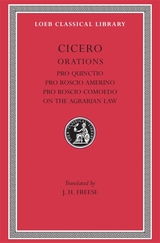 Pro Quinctio. Pro Roscio Amerino. Pro Roscio Comoedo. On the Agrarian Law
Cicero
Harvard University Press The early speeches.
Cicero (Marcus Tullius, 106–43 BC), Roman lawyer, orator, politician, and philosopher, of whom we know more than of any other Roman, lived through the stirring era that saw the rise, dictatorship, and death of Julius Caesar in a tottering republic. In his political speeches especially and in his correspondence we see the excitement, tension and intrigue of politics and the part he played in the turmoil of the time. Of about 106 speeches, delivered before the Roman people or the Senate if they were political, before jurors if judicial, fifty-eight survive (a few of them incompletely). In the fourteenth century Petrarch and other Italian humanists discovered manuscripts containing more than 900 letters of which more than 800 were written by Cicero and nearly 100 by others to him. These afford a revelation of the man all the more striking because most were not written for publication. Six rhetorical works survive and another in fragments. Philosophical works include seven extant major compositions and a number of others; and some lost. There is also poetry, some original, some as translations from the Greek.
The Loeb Classical Library edition of Cicero is in twenty-nine volumes.
 Pro Quinctio. Pro Roscio Amerino. Pro Roscio Comoedo. Pro Tullio. De Lege Agraria
Cicero
Harvard University Press, 2025 The early speeches.
Cicero (Marcus Tullius, 106–43 BC), Roman lawyer, orator, politician, and philosopher, of whom we know more than of any other Roman, lived through the stirring era that saw the rise, dictatorship, and death of Julius Caesar in a tottering republic. In his political speeches especially and in his correspondence we see the excitement, tension, and intrigue of politics and the part he played in the turmoil of the time. Of about 106 known speeches, fifty-eight survive intact or in large part; together with his rhetorical treatises, they have long served as models for orators, advocates, and others.
This volume contains four speeches from Cicero’s pre-consular, and one from his consular period. Pro Quinctio, his earliest surviving defense (81), handles a complex commercial dispute deftly and in loftier style than usual in such cases. Pro Roscio Amerino, his first criminal case (80), is a successful defense on a politically fraught charge of parricide. Pro Roscio Comoedo (72 or 71) defends a famous actor and old friend involved in a financial dispute, with suitably theatrical flair. Pro Tullio (71), a dispute between neighbors about a deadly slave attack, casts light on social conditions in the Italian countryside in the aftermath of Spartacus’ revolt. De Lege Agraria (63) successfully forces the withdrawal of a proposal for the distribution of agricultural land to the urban plebs.
This edition replaces the original by John Henry Freese (1930). The texts have been freshly edited and translated, with full introductions and ample notation.
 Pro Sestio. In Vatinium
Cicero
Harvard University Press The statesman defends a friend and assails an enemy.
Cicero (Marcus Tullius, 106–43 BC), Roman lawyer, orator, politician, and philosopher, of whom we know more than of any other Roman, lived through the stirring era that saw the rise, dictatorship, and death of Julius Caesar in a tottering republic. In his political speeches especially and in his correspondence we see the excitement, tension and intrigue of politics and the part he played in the turmoil of the time. Of about 106 speeches, delivered before the Roman people or the Senate if they were political, before jurors if judicial, fifty-eight survive (a few of them incompletely). In the fourteenth century Petrarch and other Italian humanists discovered manuscripts containing more than 900 letters of which more than 800 were written by Cicero and nearly 100 by others to him. These afford a revelation of the man all the more striking because most were not written for publication. Six rhetorical works survive and another in fragments. Philosophical works include seven extant major compositions and a number of others; and some lost. There is also poetry, some original, some as translations from the Greek.
The Loeb Classical Library edition of Cicero is in twenty-nine volumes.
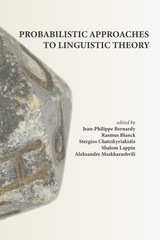 Probabilistic Approaches to Linguistic Theory
Edited by Jean-Philippe Bernardy, Rasmus Blanck, Stergios Chatzikyriakidis, Shalom Lappin, and Aleksandre Maskharashvili
CSLI, 2022 A textbook exploring predictive modes of linguistic development and analysis.
During the last two decades, computational linguists, in concert with other researchers in AI, have turned to machine learning and statistical techniques to capture features of natural language and aspects of the learning process that are not easily accommodated in classical algebraic frameworks. These developments are producing a revolution in linguistics in which traditional symbolic systems are giving way to probabilistic and deep learning approaches. This collection features articles that provide background to these approaches, and their application in syntax, semantics, pragmatics, morphology, psycholinguistics, neurolinguistics, and dialogue modeling. Each chapter provides a self-contained introduction to the topic that it covers, making this volume accessible to graduate students and researchers in linguistics, NLP, AI, and cognitive science.
 The Probability Map of the Universe: Essays on David Albert’s Time and Chance
Barry Loewer
Harvard University Press, 2023 Philosophers debate the ideas and implications of one of the most important contemporary works in the philosophy of science, David Albert’s Time and Chance.
In the twenty-odd years since its publication, David Albert’s Time and Chance has been recognized as one of the most significant contemporary contributions to the philosophy of science. Here, philosophers and physicists explore the implications of Albert’s arguments and debate his solutions to some of the most intractable problems in theoretical physics.
Albert has attempted to make sense of the tension between our best scientific pictures of the fundamental physical structure of the world and our everyday empirical experience of that world. In particular, he is concerned with problems arising from causality and the direction of time: defying common sense, almost all our basic scientific ideas suggest that whatever can happen can just as naturally happen in reverse. Focusing on Newtonian mechanics, Albert provides a systematic account of the temporal irreversibility of the Second Law of Thermodynamics, of the asymmetries in our epistemic access to the past and the future, and of our conviction that by acting now we can affect the future but not the past. He also generalizes the Newtonian picture to the quantum-mechanical case and suggests a deep potential connection between the problem of the direction of time and the quantum-mechanical measurement problem.
The essays included in The Probability Map of the Universe develop, explore, and critique this account, while Albert himself replies. The result is an insightful discussion of the foundations of statistical mechanics and its relation to cosmology, the direction of time, and the metaphysical nature of laws and objective probability.
Probable Cause: Crime Fiction in America
LeRoy Lad Panek
University of Wisconsin Press, 1990 American crime fiction has developed into writing that has a commitment to democracy and the democratic way of life, a compassion and empathy and a style which has created a significant branch of American literature.
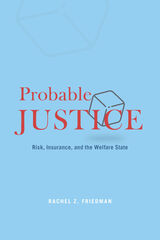 Probable Justice: Risk, Insurance, and the Welfare State
Rachel Z. Friedman
University of Chicago Press, 2020 Decades into its existence as a foundational aspect of modern political and economic life, the welfare state has become a political cudgel, used to assign blame for ballooning national debt and tout the need for personal responsibility. At the same time, it affects nearly every citizen and permeates daily life—in the form of pension, disability, and unemployment benefits, healthcare and parental leave policies, and more. At the core of that disjunction is the question of how we as a society decide who should get what benefits—and how much we are willing to pay to do so.
Probable Justice traces a history of social insurance from the eighteenth century to today, from the earliest ideas of social accountability through the advanced welfare state of collective responsibility and risk. At the heart of Rachel Z. Friedman’s investigation is a study of how probability theory allows social insurance systems to flexibly measure risk and distribute coverage. The political genius of social insurance, Friedman shows, is that it allows for various accommodations of needs, risks, financing, and political aims—and thereby promotes security and fairness for citizens of liberal democracies.
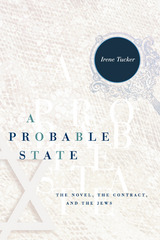 A Probable State: The Novel, the Contract, and the Jews
Irene Tucker
University of Chicago Press, 2000 Why has the realist novel been persistently understood as promoting liberalism? Can this tendency be reconciled with an equally familiar tendency to see the novel as a national form? In A Probable State, Irene Tucker builds a revisionary argument about liberalism and the realist novel by shifting the focus from the rise of both in the eighteenth century to their breakdown at the end of the nineteenth. Through a series of intricate and absorbing readings, Tucker relates the decline of realism and the eroding logic of liberalism to the question of Jewish characters and writers and to shifting ideas of community and nation.
Whereas previous critics have explored the relationship between liberalism and the novel by studying the novel's liberal characters, Tucker argues that the liberal subject is represented not merely within the novel, but in the experience of the novel's form as well. With special attention to George Eliot, Henry James, Oliver Wendell Holmes, and S. Y. Abramovitch, Tucker shows how we can understand liberalism and the novel as modes of recognizing and negotiating with history.
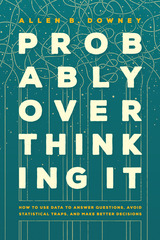 Probably Overthinking It: How to Use Data to Answer Questions, Avoid Statistical Traps, and Make Better Decisions
Allen B. Downey
University of Chicago Press, 2023 An essential guide to the ways data can improve decision making.
Statistics are everywhere: in news reports, at the doctor’s office, and in every sort of forecast, from the stock market to the weather. Blogger, teacher, and computer scientist Allen B. Downey knows well that people have an innate ability both to understand statistics and to be fooled by them. As he makes clear in this accessible introduction to statistical thinking, the stakes are big. Simple misunderstandings have led to incorrect medical prognoses, underestimated the likelihood of large earthquakes, hindered social justice efforts, and resulted in dubious policy decisions. There are right and wrong ways to look at numbers, and Downey will help you see which are which.
Probably Overthinking It uses real data to delve into real examples with real consequences, drawing on cases from health campaigns, political movements, chess rankings, and more. He lays out common pitfalls—like the base rate fallacy, length-biased sampling, and Simpson’s paradox—and shines a light on what we learn when we interpret data correctly, and what goes wrong when we don’t. Using data visualizations instead of equations, he builds understanding from the basics to help you recognize errors, whether in your own thinking or in media reports. Even if you have never studied statistics—or if you have and forgot everything you learned—this book will offer new insight into the methods and measurements that help us understand the world.
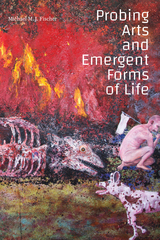 Probing Arts and Emergent Forms of Life
Michael M. J. Fischer
Duke University Press, 2023 In Probing Arts and Emergent Forms of Life Michael M. J. Fischer calls for a new anthropology of the arts that attends to the materialities and technologies of the world as it exists today. Fischer examines the work of key Southeast and East Asian artists within the crucibles of unequal access, geopolitics, reverberating past traumas, and emergent socialities. He outlines the work of artist-theorists---including Entang Wiharso, Sally Smart, Charles Lim, Zai Kuning, and Kiran Kumar---who speculate about changing the world in ways that are attuned to its cultivation, repair, and rethinking in the Anthropocene. Their artistic vocabulary not only undoes Western art models and categories; it probes the unfolding future, addresses past trauma, and creates contested, vibrant, and flourishing spaces. Throughout Indonesia, Korea, Singapore, Thailand, and Vietnam---and from Kumar’s experimental dance to Kuning’s rattan and beeswax ghost ships to Lim’s videography of Singapore from the sea---Fischer argues that these artists’ theoretical discourses should be privileged over those of the curators, historians, critics, and other gatekeepers who protect and claim art worlds for themselves.
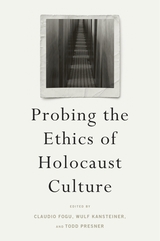 Probing the Ethics of Holocaust Culture
Claudio Fogu, Wulf Kansteiner, and Todd Presner
Harvard University Press, 2016 Depictions of the Holocaust in history, literature, and film became a focus of intense academic debate in the 1980s and 1990s. Today, with the passing of the eyewitness generation and the rise of comparative genocide studies, the Holocaust’s privileged place not only in scholarly discourse but across Western society has been called into question.
Probing the Ethics of Holocaust Culture is a searching reappraisal of the debates and controversies that have shaped Holocaust studies over a quarter century. This landmark volume brings international scholars of the founding generation of Holocaust studies into conversation with a new generation of historians, artists, and writers who have challenged the limits of representation through their scholarly and cultural practices. Focusing on the public memorial cultures, testimonial narratives, and artifacts of cultural memory and history generated by Holocaust remembrance, the volume examines how Holocaust culture has become institutionalized, globalized, and variously contested. Organized around three interlocking themes—the stakes of narrative, the remediation of the archive, and the politics of exceptionality—the essays in this volume explore the complex ethics surrounding the discourses, artifacts, and institutions of Holocaust remembrance.
From contrasting viewpoints and, in particular, from the multiple perspectives of genocide studies, the authors question if and why the Holocaust should remain the ultimate test case for ethics and a unique reference point for how we understand genocide and crimes against humanity.
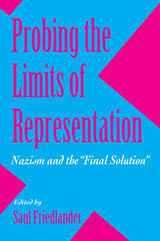 Probing the Limits of Representation: Nazism and the “Final Solution”
Saul Friedlander
Harvard University Press, 1992 Can the Holocaust be compellingly described or represented? Or is there some core aspect of the extermination of the Jews of Europe which resists our powers of depiction, of theory, of narrative? In this volume, twenty scholars probe the moral, epistemological, and aesthetic limits of an account or portrayal of the Nazi horror.
Christopher Browning, Hayden White, Carlo Ginzburg, Martin Jay, Dominick LaCapra, and others focus first on the general question: can the record of his historical event be established objectively through documents and witnesses, or is every historical interpretation informed by the perspective of its narrator? The suggestion that all historical accounts are determined by a preestablished narrative choice raises the ethical and intellectual issues of various forms of relativization. In more specific terms, what are the possibilities of historicizing National Socialism without minimizing the historical place of the Holocaust?
Also at issue are the problems related to an artistic representation, particularly the dilemmas posed by aestheticization. John Felstiner, Yael S. Feldman, Sidra Ezrahi, Eric Santner, and Anton Kaes grapple with these questions and confront the inadequacy of words in the face of the Holocaust. Others address the problem of fitting Nazi policies and atrocities into the history of Western thought and science. The book concludes with Geoffrey Hartman’s evocative meditation on memory.
These essays expose to scrutiny questions that have a pressing claim on our attention, our conscience, and our cultural memory. First presented at a conference organized by Saul Friedlander, they are now made available for the wide consideration and discussion they merit.
 Probing the Sky with Radio Waves: From Wireless Technology to the Development of Atmospheric Science
Chen-Pang Yeang
University of Chicago Press, 2013 By the late nineteenth century, engineers and experimental scientists generally knew how radio waves behaved, and by 1901 scientists were able to manipulate them to transmit messages across long distances. What no one could understand, however, was why radio waves followed the curvature of the Earth. Theorists puzzled over this for nearly twenty years before physicists confirmed the zig-zag theory, a solution that led to the discovery of a layer in the Earth’s upper atmosphere that bounces radio waves earthward—the ionosphere. In Probing the Sky with Radio Waves, Chen-Pang Yeang documents this monumental discovery and the advances in radio ionospheric propagation research that occurred in its aftermath. Yeang illustrates how the discovery of the ionosphere transformed atmospheric science from what had been primarily an observational endeavor into an experimental science. It also gave researchers a host of new theories, experiments, and instruments with which to better understand the atmosphere’s constitution, the origin of atmospheric electricity, and how the sun and geomagnetism shape the Earth’s atmosphere. This book will be warmly welcomed by scholars of astronomy, atmospheric science, geoscience, military and institutional history, and the history and philosophy of science and technology, as well as by radio amateurs and electrical engineers interested in historical perspectives on their craft.
 The Probiotic Planet: Using Life to Manage Life
Jamie Lorimer
University of Minnesota Press, 2020 Assesses a promising new approach to restoring the health of our bodies and our planet
Most of us are familiar with probiotics added to milk or yogurt to improve gastrointestinal health. In fact, the term refers to any intervention in which life is used to manage life—from the microscopic, like consuming fermented food to improve gut health, to macro approaches such as biological pest control and natural flood management. In this ambitious and original work, Jamie Lorimer offers a sweeping overview of diverse probiotic approaches and an insightful critique of their promise and limitations.
During our current epoch—the Anthropocene—human activity has been the dominant influence on climate and the environment, leading to the loss of ecological abundance, diversity, and functionality. Lorimer describes cases in which scientists and managers are working with biological processes to improve human, environmental, and even planetary health, pursuing strategies that stand in contrast to the “antibiotic approach”: Big Pharma, extreme hygiene, and industrial agriculture. The Probiotic Planet focuses on two forms of “rewilding” occurring on vastly different scales. The first is the use of keystone species like wolves and beavers as part of landscape restoration. The second is the introduction of hookworms into human hosts to treat autoimmune disorders. In both cases, the goal is to improve environmental health, whether the environment being managed is planetary or human. Lorimer argues that, all too often, such interventions are viewed in isolation, and he calls for a rethinking of artificial barriers between science and policy. He also describes the stark and unequal geographies of the use of probiotic approaches and examines why these patterns exist.
The author’s preface provides a thoughtful discussion of the COVID-19 pandemic as it relates to the probiotic approach. Informed by deep engagement with microbiology, immunology, ecology, and conservation biology as well as food, agriculture, and waste management, The Probiotic Planet offers nothing less than a new paradigm for collaboration between the policy realm and the natural sciences.
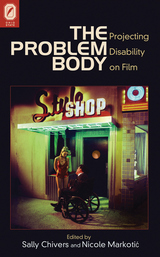 The Problem Body: Projecting Disability on Film
Edited by Sally Chivers and Nicole Markotic
Ohio State University Press, 2010 In The Problem Body, editors Sally Chivers and Nicole Markotic bring together the work of eleven of the best disability scholars from the U.S., the U.K., Canada, and South Korea to explore a new approach to the study of film by concentrating on cinematic representations of what they term “the problem body.” The book is a much-needed exploration of the projection of disability on film combined with a much-needed rethinking of hierarchies of difference. The editors turned to the existing corpus of disability theory with its impressive insights about the social and cultural mediation of disabled bodies. They then sought, from scholars at every stage of their careers, new ideas about how disabled bodies coexist with a range of other bodies (gendered, queered, racialized, classed, etc.).
To call into question why certain bodies invite the label “problem” more frequently than other bodies, the contributors draw on scholarship from feminist, race, queer, cultural studies, disability, and film studies arenas. In Chivers and Markotic’s introduction, they draw on disability theory and a range of cinematic examples to explain the term “problem body” in relation to its projection. In explorations of film noir, illness narratives, classical Hollywood film, and French film, the essays reveal the “problem body” as a multiplication of lived circumstances constructed both physically and socially.
 A Problem Like Maria: Gender and Sexuality in the American Musical
Stacy Wolf
University of Michigan Press, 2002 Subverting assumptions that American musical theater is steeped in nostalgia, cheap sentiment, misogyny, and homophobia, this book shows how musicals of the 1950s and early 1960s celebrated strong women characters who defied the era's gender expectations. A Problem Like Maria reexamines the roles, careers, and performances of four of musical theater's greatest stars-Mary Martin, Ethel Merman, Julie Andrews, and Barbra Streisand-through a lesbian feminist lens. Focusing on both star persona and performance, Stacy Wolf argues that each of her subjects deftly crafted characters (both on and offstage) whose defiance of the norms of mid-twentiethcentury femininity had immediate appeal to spectators on the ideological and sexual margins, yet could still play in Peoria.
Chapter by chapter, the book analyzes the stars' best-known and best-loved roles, including Martin as Nellie in South Pacific, Merman as Momma Rose in GypsyAndrews as Eliza in My Fair Lady and Guinevere in Camelot, and Streisand as Fanny Brice in Funny Girl. The final chapter scrutinizes the Broadway and film versions of The Sound of Music, illuminating its place in the hearts of lesbian spectators and the "delicious queerness" of Andrews's troublesome nun. As the first feminist and lesbian study of the American Broadway musical, A Problem Like Maria is a groundbreaking contribution to feminist studies, queer studies, and American studies and a delight for fans of musical theater.
Stacy Wolf is Associate Professor of Theatre and Dance, University of Texas, Austin.
 PROBLEM NOVELS: VICTORIAN FICTION THEORIZES THE SENSATIONAL SELF
Anna Maria Jones
Ohio State University Press, 2007 In Problem Novels, Anna Maria Jones argues that, far from participating “invisibly” in disciplinary regimes, many Victorian novels articulate sophisticated theories about the role of the novel in the formation of the self. In fact, it is rare to find a Victorian novel in which questions about the danger or utility of novel reading are not embedded within the narrative. In other words, one of the stories that the Victorian novel tells, over and over again, is the story of what novels do to readers. This story occurs in moments that call attention to the reader’s engagement with the text.
In chapters on Wilkie Collins, Anthony Trollope, and George Meredith, Jones examines “problem novels”—that is, novels that both narrate and invite problematic reading as part of their theorizing of cultural production. Problem Novels demonstrates that these works posit a culturally imbedded, sensationally susceptible reader and, at the same time, present a methodology for critical engagement with cultural texts. Thus, the novels theorize, paradoxically, a reader who is both unconsciously interpellated and critically empowered. And, Jones argues, it is this paradoxical construction of the unconscious/critical subject that re-emerges in the theoretical paradigms of Victorian cultural studies scholarship. Indeed, as Problem Novels shows, Victorianists’ attachments to critical “detective work” closely resemble the sensational attachments that we assume shaped Victorian novel readers.
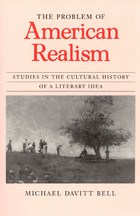 The Problem of American Realism: Studies in the Cultural History of a Literary Idea
Michael Davitt Bell
University of Chicago Press, 1993 Ever since William Dean Howells declared his "realism war" in the 1880s, literary historians have regarded the rise of realism and naturalism as the signal development in post-Civil War American fiction. Questioning this generalization, Michael Davitt Bell investigates the role that these terms played in the social and literary discourse of the 1880s and 1890s. He argues that "realism" and "naturalism" were ideological categories used to promote a version of "reality" based on radically anti-"literary" and heavily gendered assumptions.
In chapters on William Dean Howells, Frank Norris, Mark Twain, Henry James, Stephen Crane, Theodore Dreiser, and Sarah Orne Jewett, Bell examines the effects that ideas about realism and naturalism had on writers. He demonstrates that, for many of them, claiming to be a realist or a naturalist was a way to provide assurance that one was a "real" man rather than an "effeminate" artist.
 The Problem of Assessment in Art and Design
Edited by Trevor Rayment
Intellect Books, 2007 Due to the inevitably subjective nature of art, the issue of evaluating the work of art students will always be controversial. In The Problem of Assessment in Art and Design, a distinguished group of art educators and experts examine this divisive topic across the educational spectrum, from elementary schools to university campuses.
This volume analyzes the present state of art and design assessment from both historical and philosophical perspectives, pointing the way toward possible directions for reform and reconciling the conflict between objective evaluation and individual creativity. “The chapters provide an historical and philosophical analysis of the present state of assessment in art and design in England where assessment in art and design is considered to be essential, but where the assessment procedures are controversial and vehemently contested. Without providing any practical, definitive answers the authors map out some possible directions for reform.”—Teresa Eça, Apecv, Portugal
 The Problem of Beauty: Aesthetic Thought and Pursuits in Northern Song Dynasty China
Ronald C. Egan
Harvard University Press, 2006 During the Northern Song dynasty (960-1126), new ground was broken in aesthetic thought, particularly in the fields of art collecting, poetry criticism, connoisseurship of flowers, and the song lyric. Collectively these activities constitute much of what was distinctive about Northern Song culture. Yet the subjects treated here were unprecedented when they appeared; consequently, bold exploration was coupled with anxiety about the worth of these interests, especially given the Confucian biases against these pursuits.
Despite differences in each area, certain overarching themes surface repeatedly. Together, these interests and choices suggest a logic behind the new directions of literati culture in the Northern Song. By focusing on the "problem of beauty," the author calls attention to the difficulties that Northern Song innovators faced in justifying these new pursuits.
 The Problem of Evil: Selected Readings, Second Edition
Michael L. Peterson
University of Notre Dame Press, 2016 Of all the issues in the philosophy of religion, the problem of reconciling belief in God with evil in the world arguably commands more attention than any other. For over two decades, Michael L. Peterson’s The Problem of Evil: Selected Readings has been the most widely recognized and used anthology on the subject. Peterson's expanded and updated second edition retains the key features of the original and presents the main positions and strategies in the latest philosophical literature on the subject. It will remain the most complete introduction to the subject as well as a resource for advanced study.
Peterson organizes his selection of classical and contemporary sources into four parts: important statements addressing the problem of evil from great literature and classical philosophy; debates based on the logical, evidential, and existential versions of the problem; major attempts to square God's justice with the presence of evil, such as Augustinian, Irenaean, process, openness, and felix culpa theodicies; and debates on the problem of evil covering such concepts as best possible world, natural evil and natural laws, gratuitous evil, skeptical theist defense, and the bearing of biological evolution on the problem. The second edition includes classical excerpts from the book of Job, Voltaire, Dostoevsky, Augustine, Aquinas, Leibniz, and Hume, and twenty-five essays that have shaped the contemporary discussion, by J. L. Mackie, Alvin Plantinga, William Rowe, Marilyn Adams, John Hick, William Hasker, Paul Draper, Michael Bergmann, Eleonore Stump, Peter van Inwagen, and numerous others. Whether a professional philosopher, student, or interested layperson, the reader will be able to work through a number of issues related to how evil in the world affects belief in God.
Praise for the first edition:
"No other anthology effectively organizes so many previously published essays and excerpts covering such a wide range of philosophical issues on the problem of evil. . . . For anyone seeking an entry into classical and contemporary philosophical literature on the problem of evil, this book is a great place to start." —The Christian Scholar's Review
 The Problem of Evil: Slavery, Freedom and the Ambiguities of American Reform
Steven Mintz
University of Massachusetts Press, 2007 A collective effort to present a new kind of moral history, this volume seeks to show how the study of the past can illuminate profound ethical and philosophical issues. More specifically, the contributors address a variety of questions raised by the history of American slavery. How did freedom—personal, civic, and political—become one of the most cherished values in the Western world? How has the language of slavery been applied to other instances of exploitation and depersonalization? To what extent is America's high homicide rate a legacy of slavery? Did the abolitionist movement's tendency to view slavery as a product of sin, rather than as a structural and economic problem, accelerate or impede emancipation?
Divided into four parts, with introductions to each section by editors Steven Mintz and John Stauffer, the essays provide succinct guides to the evolution of American slavery, the origins of antislavery thought, the challenges of emancipation, and the post-emancipation legacy of slavery. They also offer fresh perspectives on key individuals, from Benjamin Franklin and Frederick Douglass to Harriet Jacobs and John Brown, and shed new light on the differences between female and male critiques of slavery, the defense of slavery by the South's intellectual elite, and Catholic attitudes toward slavery and abolition.
Above all, The Problem of Evil helps us understand the circumstances that allow social evils to happen, how intelligent and ostensibly moral people can participate in the most horrendous crimes, and how, at certain historical moments, some individuals are able to rise above their circumstances, address evil in fundamental ways, and expand our moral consciousness.
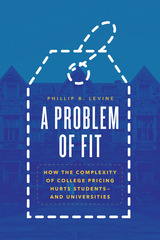 A Problem of Fit: How the Complexity of College Pricing Hurts Students—and Universities
Phillip B. Levine
University of Chicago Press, 2022 A critical examination of the complex system of college pricing—how it works, how it fails, and how fixing it can help both students and universities.
How much does it cost to attend college in the United States today? The answer is more complex than many realize. College websites advertise a sticker price, but uncovering the actual price—the one after incorporating financial aid—can be difficult for students and families. This inherent uncertainty leads some students to forgo applying to colleges that would be the best fit for them, or even not attend college at all. The result is that millions of promising young people may lose out on one of society’s greatest opportunities for social mobility. Colleges suffer too, losing prospective students and seeing lower enrollments and less socioeconomic diversity. If markets require prices to function well, then the American higher-education system—rife as it is with ambiguity in its pricing—amounts to a market failure.
In A Problem of Fit, economist Phillip B. Levine explains why institutions charge the prices they do and discusses the role of financial aid systems in facilitating—and discouraging—access to college. Affordability issues are real, but price transparency is also part of the problem. As Levine makes clear, our conversations around affordability and free tuition miss a larger truth: that the opacity of our current college-financing systems is a primary driver of inequities in education and society. In a clear-eyed assessment of educational access and aid in a post-COVID-19 economy, A Problem of Fit offers a trenchant new argument for educational reforms that are well within reach.
 The Problem of Genesis in Husserl's Philosophy
Jacques Derrida
University of Chicago Press, 2003 Derrida's first book-length work, The Problem of Genesis in Husserl's Philosophy, was originally written as a dissertation for his diplôme d'études supérieures in 1953 and 1954. Surveying Husserl's major works on phenomenology, Derrida reveals what he sees as an internal tension in Husserl's central notion of genesis, and gives us our first glimpse into the concerns and frustrations that would later lead Derrida to abandon phenomenology and develop his now famous method of deconstruction.
For Derrida, the problem of genesis in Husserl's philosophy is that both temporality and meaning must be generated by prior acts of the transcendental subject, but transcendental subjectivity must itself be constituted by an act of genesis. Hence, the notion of genesis in the phenomenological sense underlies both temporality and atemporality, history and philosophy, resulting in a tension that Derrida sees as ultimately unresolvable yet central to the practice of phenomenology.
Ten years later, Derrida moved away from phenomenology entirely, arguing in his introduction to Husserl's posthumously published Origin of Geometry and his own Speech and Phenomena that the phenomenological project has neither resolved this tension nor expressly worked with it. The Problem of Genesis complements these other works, showing the development of Derrida's approach to phenomenology as well as documenting the state of phenomenological thought in France during a particularly fertile period, when Levinas, Sartre, Merleau-Ponty, Ricoeur, and Tran-Duc-Thao, as well as Derrida, were all working through it. But the book is most important in allowing us to follow Derrida's own development as a philosopher by tracing the roots of his later work in deconstruction to these early critical reflections on Husserl's phenomenology.
"A dissertation is not merely a prerequisite for an academic job. It may set the stage for a scholar's life project. So, the doctoral dissertations of Max Weber and Jacques Derrida, never before available in English, may be of more than passing interest. In June, the University of Chicago Press will publish Mr. Derrida's dissertation, The Problem of Genesis in Husserl's Philosophy, which the French philosopher wrote in 1953-54 as a doctoral student, and which did not appear in French until 1990. From the start, Mr Derrida displayed his inventive linguistic style and flouting of convention."—Danny Postel, Chronicle of Higher Education
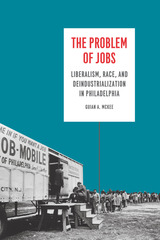 The Problem of Jobs: Liberalism, Race, and Deindustrialization in Philadelphia
Guian A. McKee
University of Chicago Press, 2008 Contesting claims that postwar American liberalism retreated from fights against unemployment and economic inequality, The Problem of Jobs reveals that such efforts did not collapse after the New Deal but instead began to flourish at the local, rather than the national, level.
With a focus on Philadelphia, this volume illuminates the central role of these local political and policy struggles in shaping the fortunes of city and citizen alike. In the process, it tells the remarkable story of how Philadelphia’s policymakers and community activists energetically worked to challenge deindustrialization through an innovative series of job retention initiatives, training programs, inner-city business development projects, and early affirmative action programs. Without ignoring the failure of Philadelphians to combat institutionalized racism, Guian McKee's account of their surprising success draws a portrait of American liberalism that evinces a potency not usually associated with the postwar era. Ultimately interpreting economic decline as an arena for intervention rather than a historical inevitability, The Problem of Jobs serves as a timely reminder of policy’s potential to combat injustice.
 The Problem of Order: What Unites and Divides Society
Dennis Wrong
Harvard University Press At the end of the twentieth century, many fear that the bonds holding civil society together have come undone. Yet, as the noted scholar Dennis Wrong shows us, our generation is not alone in fearing a breakdown of social ties and a descent into violent conflict. Modern masters such as Hobbes, Rousseau, Freud, Mead, Parsons, Marx, Durkheim, and Weber tried to understand what in human nature provokes social cooperation and solidarity and what arouses conflict and chaos.
To minimize discord and promote civility, society must grasp the psychological and sociological elements of human nature involved in attaining that end. The author affords an illuminating perspective on our own efforts to create a well-functioning system that allows for productive and meaningful lives and remains open to change and growth. This important book reveals the individual and social processes that offer potential for reconciliation in the present and the future.
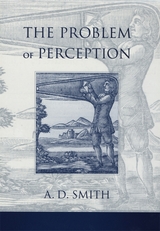 The Problem of Perception
A. D. Smith
Harvard University Press, 2002 In a major contribution to the theory of perception, A. D. Smith presents a truly original defense of direct realism--the view that in perception we are directly aware of things in the physical world.
The Problem of Perception offers two arguments against direct realism--one concerning illusion, and one concerning hallucination--that no current theory of perception can adequately rebut. Smith then develops a theory of perception that does succeed in answering these arguments; and because these arguments are the only two that present direct realism with serious problems arising from the nature of perception, direct realism emerges here for the first time as an ultimately tenable position within the philosophy of perception.
At the heart of Smith's theory is a new way of drawing the distinction between perception and sensation, along with an unusual treatment of the nature of objects of hallucination. With in-depth reference to both the analytical and the phenomenological literature on perception, and with telling criticism of alternative views, Smith's groundbreaking work will be of value to philosophers of perception in both the analytical and the phenomenological tradition, as well as to psychologists of perception.
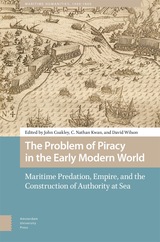 The Problem of Piracy in the Early Modern World: Maritime Predation, Empire, and the Construction of Authority at Sea
John Coakley
Amsterdam University Press, 2024 In the early modern period, both legal and illegal maritime predation was a common occurrence, but the expansion of European maritime empires exacerbated existing and created new problems of piracy across the globe. This collection of original case studies addresses these early modern problems in three sections: first, states’ attempts to exercise jurisdiction over seafarers and their actions; second, the multiple predatory marine practices considered ‘piracy’; and finally, the many representations made about piracy by states or the seafarers themselves. Across nine chapters covering regions including southeast Asia, the Atlantic archipelago, the North African states, and the Caribbean Sea, the complexities of defining and criminalizing maritime predation is explored, raising questions surrounding subjecthood, interpolity law, and the impacts of colonization on the legal and social construction of ocean, port, and coastal spaces. Seeking the meanings and motivations behind piracy, this book reveals that while European states attempted to fashion piracy into a global and homogenous phenomenon, it was largely a local and often idiosyncratic issue.
|
|

